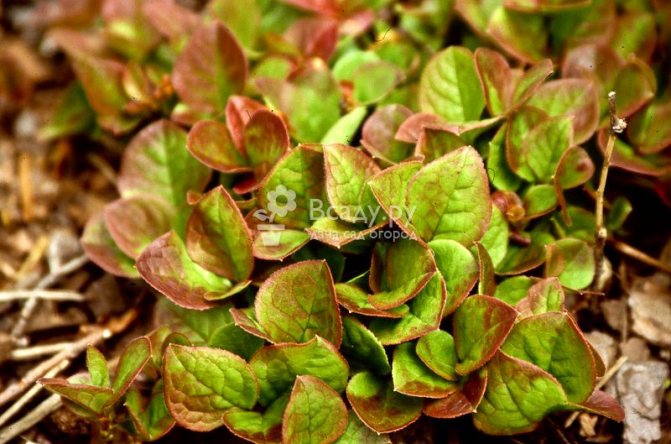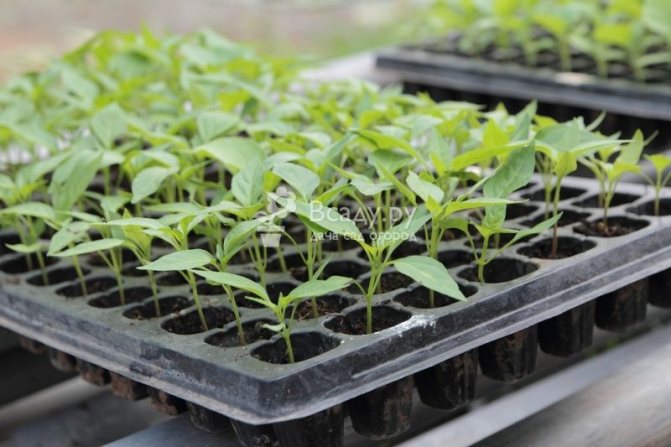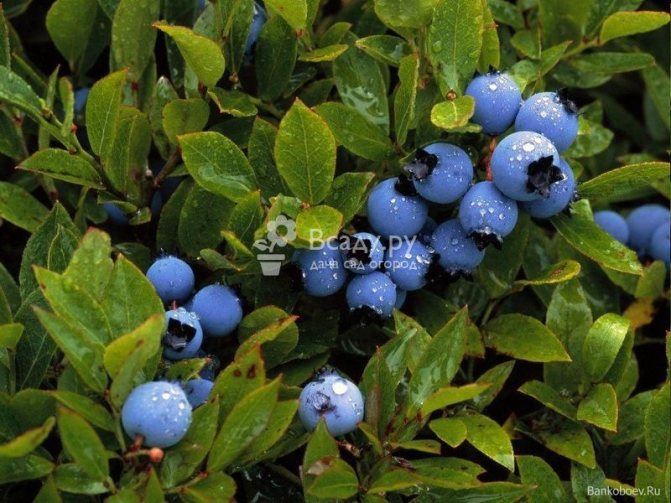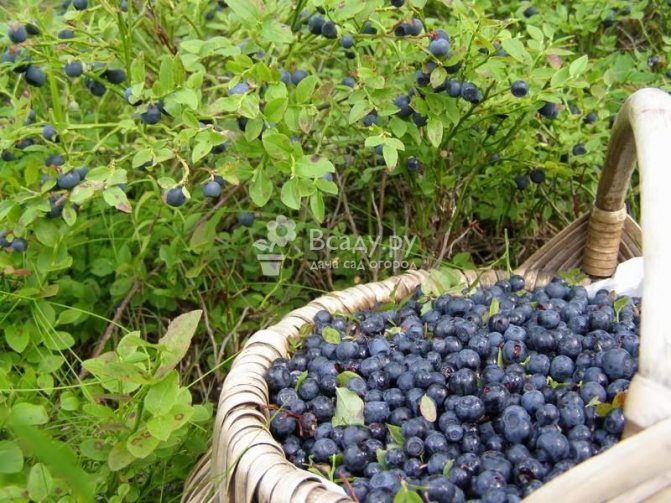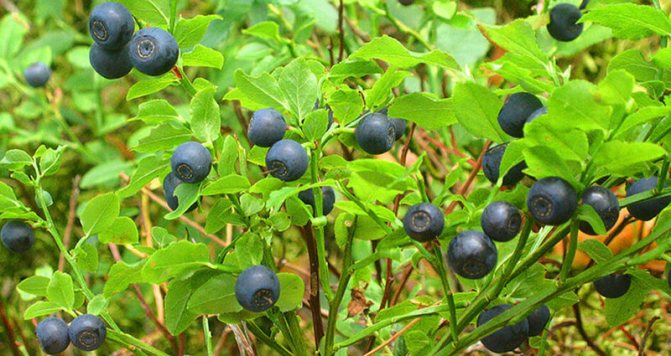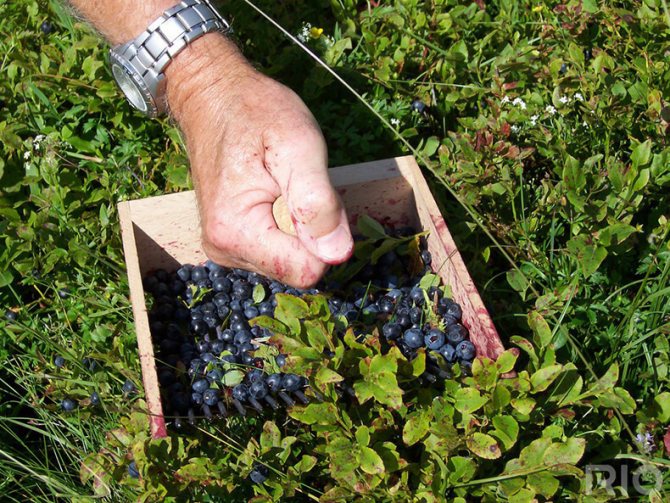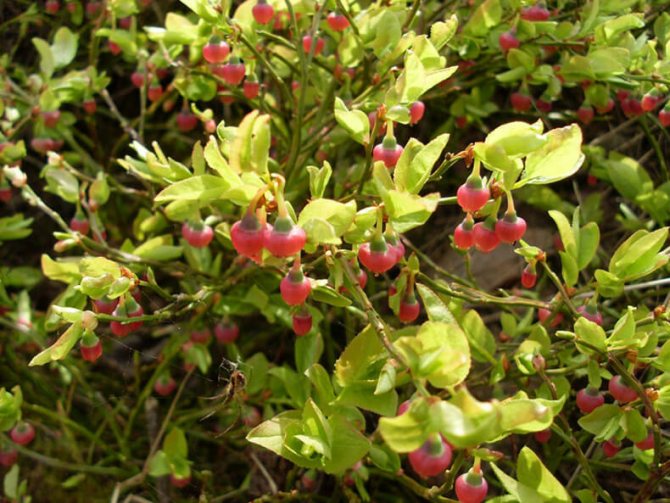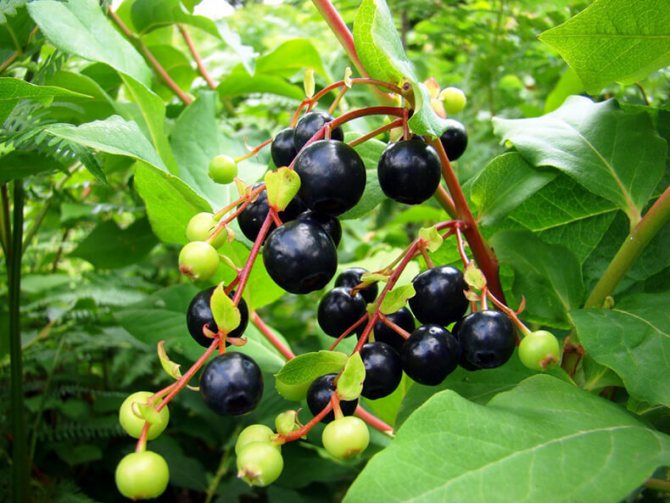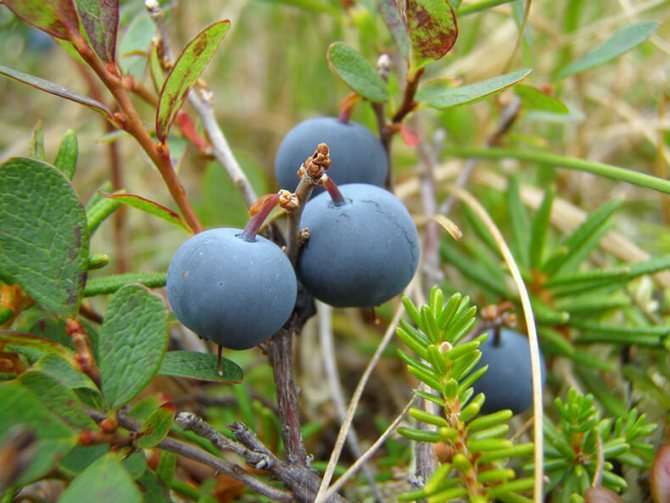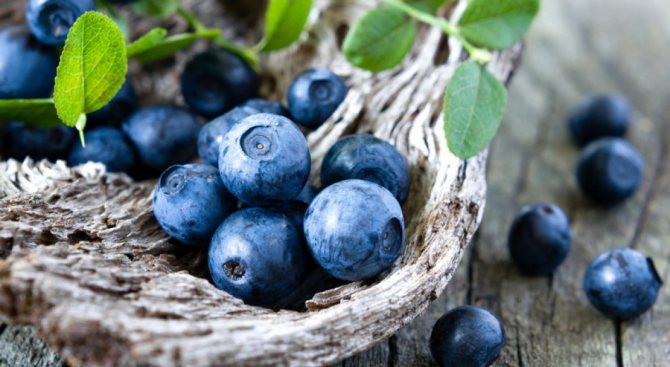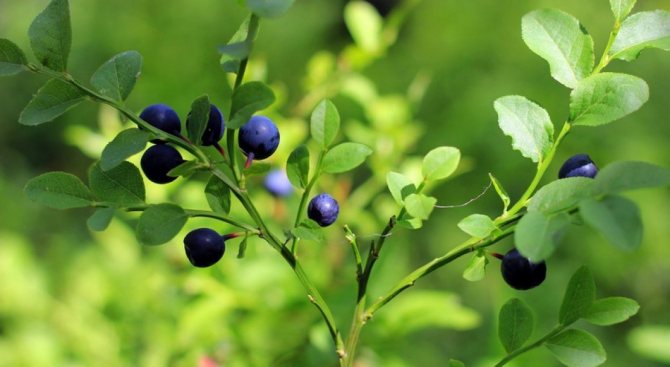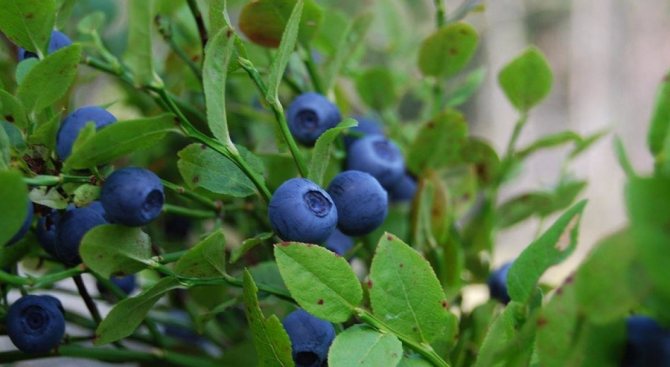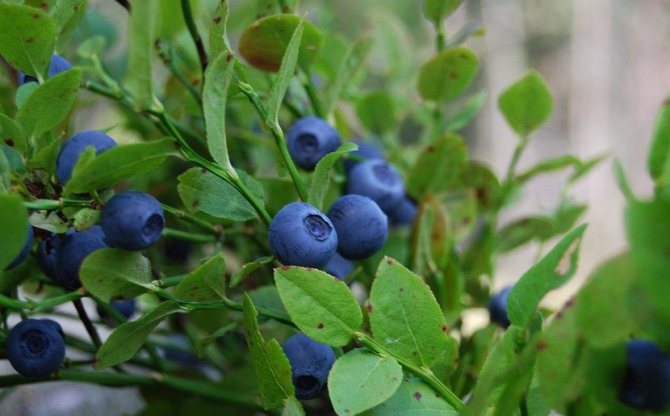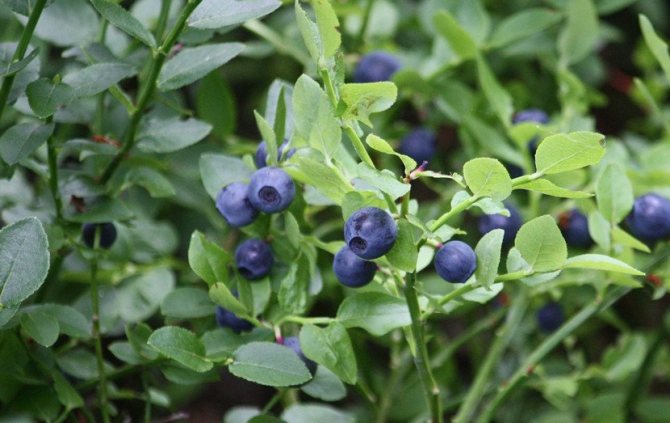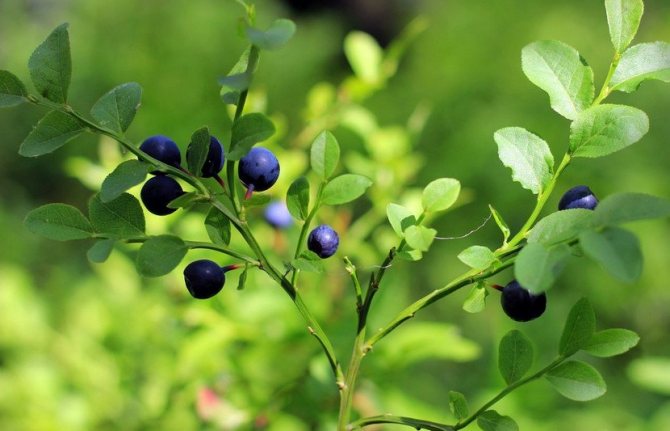Tips for planting blueberries in the garden
Blueberries are a forest plant, so at home, planting and caring for them, they need to create similar conditions.
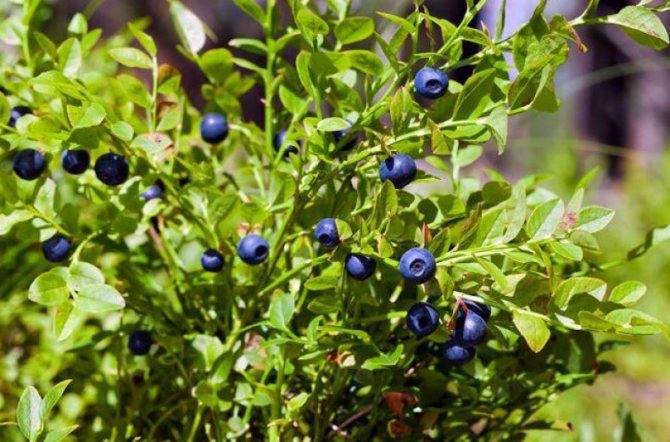
Optimal planting times
You can plant blueberries in fall or spring. The best time for planting is October and November (beginning).
Choosing a place on the site for blueberries
The natural habitat for blueberries is a pine forest, therefore, to grow blueberries in the country, you need to ensure proper moisture and acidic soil. Garden blueberries grow better in a sunny area, and not in the shade, and excessive soil moisture is undesirable for it.
Important! The combination of blueberries, lingonberries, erica and rhododendron in landscape design is used to equip an alpine slide.
Preparatory work on the site
Did you know? Blueberries are an excellent honey plant. Blueberry honey is very aromatic, it has a pleasant taste and a reddish hue.
Optimal landing pattern
If you want to plant blueberry bushes in one row, the distance between the bushes should be 1.5 m. For planting in two rows, leave 2.5 m between the bushes. Before planting blueberries, the roots of the seedlings must be straightened, and a lump of earth must be loosened. In the prepared soil, we make a hole the size of the root, moisten it, plant a bush and fill it with soil. The soil around the plant needs to be compacted and watered.
Grow blueberries from seeds at home
Growing blueberries from seeds has recently become an increasingly popular practice among gardeners who want to see homemade delicious berries on their table. If you follow the rules of growing this berry, you can enjoy its great taste, reaping a generous annual harvest.


Preparing blueberry seeds for planting. Stratification
Before planting, blueberry seeds need to be stratified, that is, to recreate the natural conditions for wintering seeds. This ensures their high germination and better growth in the future. For stratification, blueberry seeds must be placed in a container with soil in late autumn and taken to a cool basement for the whole winter, and in the city, a container with seeds can be stored in the refrigerator, in the tray in which vegetables are usually placed. You can also plant seeds directly on the site, before filling it with a suitable soil.


You need to take special care of its quality. Under natural conditions, blueberries grow on rather acidic soils, and the task of the gardener is to recreate the natural conditions of berry growth as accurately as possible.
Expert opinion. To acidify the soil, you need to use natural materials - fallen leaves, needles and sawdust of coniferous wood, moss. As a top dressing, you cannot use something that in the natural environment of blueberry growth practically does not get into the ground, for example, chalk and active organic substances.
The emergence of seedlings and care of a developing plant
If the conditions for stratification and preparation of suitable soil have been met, and the seeds themselves are viable, the appearance of the first shoots should be expected about a month after the temperature is high enough for this. To protect the seeds and control moisture and temperature, blueberry crops should be covered in spring with foil, glass or plastic.
Mulching plays an important role in ensuring the normal development of plants. As mulch, it is best to use the same materials that were introduced into the soil to acidify it, that is, needles, foliage and moss. Mulching achieves:
- optimal soil moisture level;
- preventing its excessive drying out;
- mulch, gradually decomposing, evenly saturates the soil with useful substances and allows you to recreate the natural conditions in which wild blueberries grow.
The first wintering of young blueberry seedlings
You need to be prepared for the fact that blueberries grow very slowly, and by autumn the seedlings will be only a couple of centimeters high. In the fall, they need to be identified for a permanent place of growth. To do this, the selected area is filled with specially prepared soil and, carefully, so as not to damage the root system of the plant, seedlings are planted. Before the onset of cold weather, it is imperative to cover the blueberry plantation with soft spruce spruce branches, a layer of which will not only protect the plants from the cold, but also prevent the soil from losing a lot of moisture in a snowy winter.
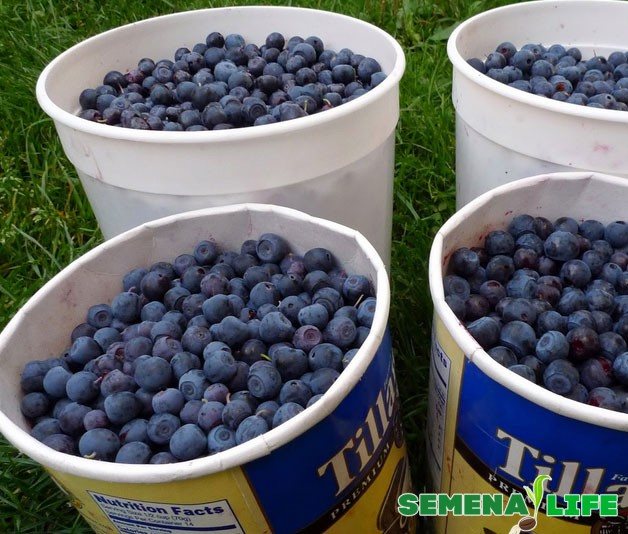

Blueberry harvest
In the second and subsequent years of plant life, you need to regularly water them and renew the mulch layer, remove weeds, and apply fertilizers. The appearance of the first berries occurs 5-6 years after the sowing of blueberry seeds.
semena.life
Rules for seasonal care for garden blueberries
When caring for garden blueberries, measures such as watering, weeding, loosening the soil, mulching, pruning are important.
How to water
Blueberries need regular, but not too abundant watering. Excess moisture can cause disease.
Weeding and loosening the soil
The roots of blueberries are almost at the surface of the soil, therefore, closer to the bush, loosening should be done with extreme caution, to a shallow depth (about 3 cm).
Role of mulch
Mulch helps to reduce the frequency of loosening, retain moisture in the soil, fight weeds, and prevents the topsoil from overheating in summer. It is best to apply a layer of sawdust 10 cm thick on the ground near the plant, without covering the root collar, and lightly mix them with the soil. Another good mulch option is shredded kitchen cleaners. With less efficiency, you can use straw and fallen leaves.
How to feed
Blueberries will reward you with a generous harvest if you feed them properly. Organic fertilizer for garden blueberries can be manure, compost or peat chips. Every 2-3 years they are brought into the topsoil at the rate of 3-4 kg per sq. m. From mineral fertilizers used superphosphate, ammonium superphosphate, potassium magnesium. With low acidity of the soil (pH above 5.0), powdered sulfur (50-60 g each) is added annually under each bush. With high-quality mulching, this procedure is optional.
Important! It is advisable to check the reaction of the soil every few years. This is done with the help of litmus paper: they put wet soil on it and wait for the color change. The optimum pH value for blueberries is 3.8.
Competent pruning
Protection from pests and diseases
To prevent plants from pests and diseases, you need to collect and burn fallen leaves, and regularly mulch the bushes.
Fertilizing and feeding crops
Despite the frequent recommendations for the application of organic fertilizers, this cannot be done. Blueberries react poorly to feeding with manure or bird droppings. She can get sick, develop worse, give a bad harvest, or even die altogether. Therefore, if you add fertilizer to the soil, then only mineral fertilizer. Dosage - no more than 1 tbsp. for 1 sq. m.
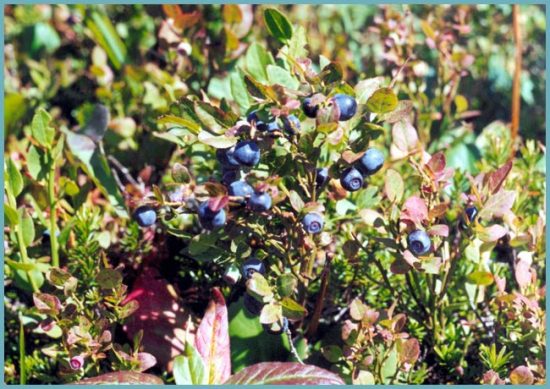

Every 2-3 years, under blueberry plantings, you need to renew the soil. For this, peat mixed with sand is poured. You can feed the bushes with a mixture of sawdust, dry grass, leaves.
Attention! The plant does not tolerate fertilizing containing chlorine.
Harvesting and storage
Blueberries are harvested from mid June to early September. Since the berries ripen unevenly, they are harvested at intervals of 5-10 days. For collection, it is better to take not a bag, but a plastic bucket. Choose dark blue-violet berries with whole skin. To tear the berry off the stem, you need to scroll it, gently holding it with two fingers.
A simple device can be built from a hose and an ordinary plastic funnel. We put the hose on the funnel, and lower the other end into the bucket. We throw the berries into the funnel, through the hose they fall into the bucket.
In addition to berries, blueberry leaves are also harvested. In May, when blueberries begin to bloom, non-flowering shoots with green shoots or individual leaves are cut with scissors and dried. They are used as a medicine with a hemostatic, astringent, urinary and choleretic, restorative effect.
You can get the most out of fresh blueberries. At zero temperature, they can be stored for up to 6 weeks. From the fruits, you can cook compote and jam, freeze, grind with sugar. Advice for long-term storage: bake glass bottles well in the oven, add peeled blueberries, cork and wax. Store in a cool, dark place.
Important! It is believed that blueberries can improve vision and cure some eye diseases, but clinical studies have not been conducted on this issue. Nevertheless, berries do have beneficial properties for the eyes.
Blueberries: Combine with Other Plants and Harvest
This culture is valuable not only for its useful properties, but also for decorativeness. In Europe, they are engaged in the cultivation and reproduction of different varieties of blueberries to decorate garden plots, especially shady ones.
It looks good in rockeries and group plantings. The combination of this shrub with conifers is considered successful. You can also plant a plant under deciduous trees, but refrain from the proximity in open ground with fruit trees, under which you apply organic fertilizers. Berry bushes border ponds and garden paths.
Advice. Blueberries lend themselves well to shearing: they are used to make curbs of different heights.
Harvesting begins in summer and lasts until autumn. It is best to do this in dry weather. Fresh berries are delicious, but when combined with strawberries, raspberries, strawberries, and cloudberries can cause stomach upset. For the winter, blueberries are dried, frozen, compotes and jams are made from them. Well, the classic blueberry treat is a delicious jam with the aroma of a sunny summer.
Blueberry breeding methods
Seed and vegetative propagation methods are suitable for blueberries. Young blueberry bushes will not begin to bear fruit soon enough. If the plant is obtained from a seed, then the berries will have to wait 5-6 years. In the case of propagation of blueberries by cuttings, it is somewhat faster.
Blueberry seed
Important! Seeds from frozen berries are suitable for growing blueberries. Before planting, they are removed and treated with growth stimulants.
Read also: Top dressing, watering, the formation of pepper after planting in open ground
Division of bushes
With this method of reproduction, the mother plant is dug up in the fall and divided into partial bushes (biological units that make up the bush), preferably with 5 intact buds. Landing is done in the usual way.
Cuttings
Growing blueberries on the site is a difficult process that requires knowledge, effort and patience, because the harvest from the planted bushes has to wait for several years.
How to grow blueberries from seeds at home?
Blueberries are a very healthy berry from the heather family. The fruits contain a huge set of vitamins and minerals, which helps to increase immunity and improve vision.In nature, blueberries grow in abundance in the forests of central Russia and in cold regions. Farmers and summer residents are interested in growing blueberries from seeds at home primarily because their fruits are tasty and healthy, and the shrub is great for decorating the site.
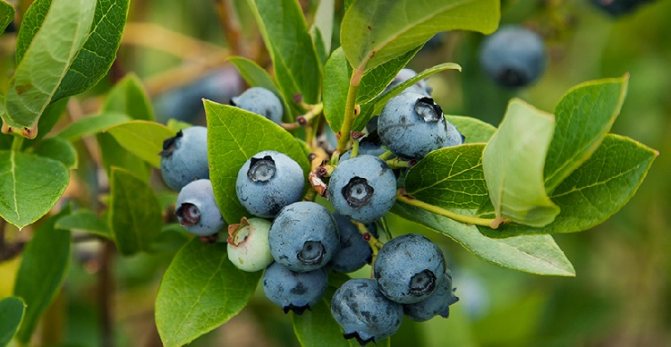

Blueberries are a very healthy berry from the heather family.
"Look at me from the side"
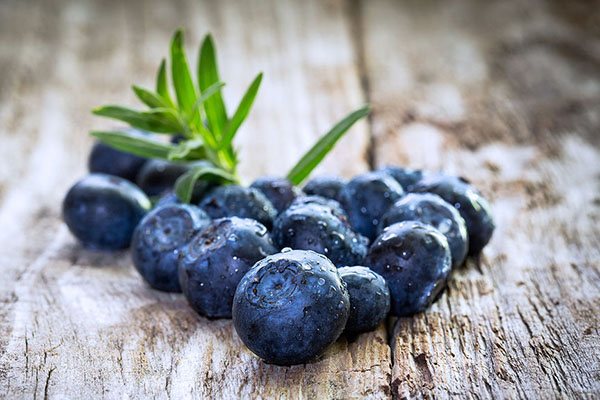

Enjoying the beauty of the surrounding world, sometimes it seems that the plants are begging to pay attention to them. Some do it with variegated colors, others with refined aromas. However, berry crops attract with their exquisite taste and unique set of vitamins.
Before you start growing blueberries in your garden, it would be wise to get to know this cute plant. In nature, the culture is found in the humid forests of northern Europe and America. Low bushes can be found in the taiga. And in the subtropics, blueberries look like a lush curly bush, strewn with berries.
The habitat shows that blueberries are not afraid of both severe frosts and intense heat.
Bilberry belongs to the Heather family and is a low shrub. It grows up to about 0.5 m. In extreme conditions of the North it reaches only 10 cm. The plant has a main trunk, from which shoots extend at an acute angle. Each of them grows successive ovoid leaves with finely serrated edges. The back of the plates is pale, and the front is light green. Due to this structure and shape, rainwater drops flow down them to the main trunk, feeding the root with moisture.
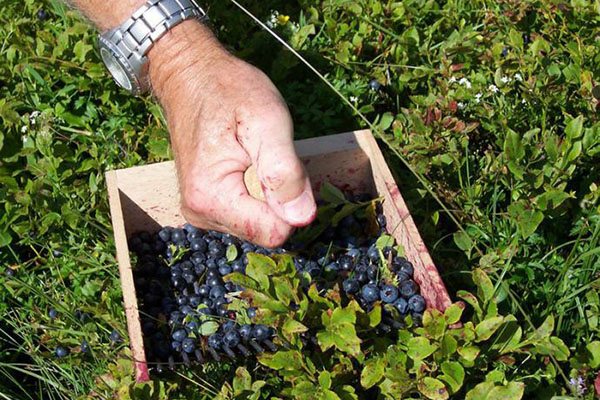

Blueberry bloom begins in May. Single buds are white with a greenish tint. They are lowered to protect them from excessive moisture. Since the plant is considered a honey plant, pollination takes place with the help of bees or bumblebees.
The fruits are round and bluish-black in color. The outer part is covered with a waxy coating that can be easily washed off with water. The pulp is colored purple. Inside the berry there are miniature seeds, which number from 20 to 40 pieces.
The early varieties are harvested in July. Late options are in late September early October.
Caring for the plant on the windowsill
To see your plant healthy and enjoy delicious fruits, the owners need to know the basic rules of care and not neglect them. Be sure to become familiar with when to water your crop, what to feed, and how to ensure pollination - these factors will determine whether you can harvest a good crop.
Watering
Plants that live in containers need water much more than those that grow in the garden. The soil should be checked daily - it should be moderately moist. Do not let the soil get wet.
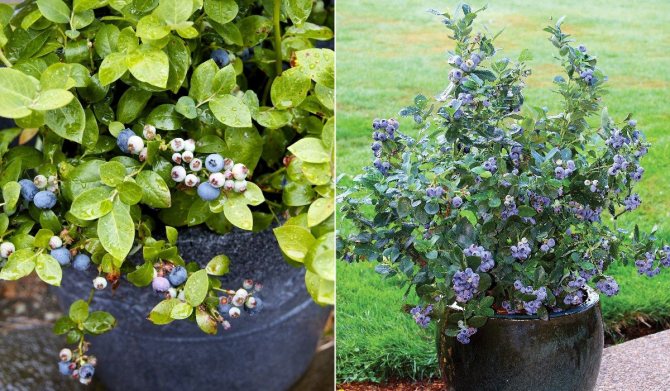

To check, dip your finger into the ground at phalanx level... Blueberries are watered once a day, and in hot weather, you can increase the number of waterings up to 2 times a day. A portion of moisture is determined by eye - water is poured slowly until it begins to seep through the drainage holes.
Important! If you plant blueberries in a clay pot, the soil will dry out faster than ceramic or plastic because of the clay's breathability.
Fertilizer
When choosing complex fertilizers, give preference to those that are designed for acid-loving plants... For example, mineral composition is a good option. Biohyper Extra... It is designed both for fertilizing the soil and as a foliar feeding, increases the immunity and productivity of blueberries, and ensures the simultaneous ripening of berries. As a result of its application, the shelf life of the harvested crop increases.
Complex mineral composition is no less effective "Agrecol for blueberries"... Granular fertilizer contains the optimal amount of nutrients required for normal crop development and good fruiting.


Top dressing is applied 2 times in the spring - in March and May. During these periods, fertilization is needed to stimulate good crop growth and berry ovary. For the rest of the period, there is no need to feed blueberries.
Lighting
Blueberries, like all fruit-bearing plants, love good light, in which the berries form faster and become more juicy. The blueberry pot should be placed on the windowsill by the window so that the plant is exposed to the sun for at least 6-8 hours a day. If very little sunlight enters your windows, it will be necessary to equip additional lighting with phytolamps.
Important! Blueberries love the change of seasons, so in winter, the pots should be moved to a cooler, poorly lit room and watered very rarely, so that the bushes do not completely dry out.
How to ensure pollination
In nature, blueberry pollination occurs with the help of pollinating insects: bees, bumblebees, etc. In an apartment, of course, this method is not permissible, so you need to know how you can carry out pollination on your own.
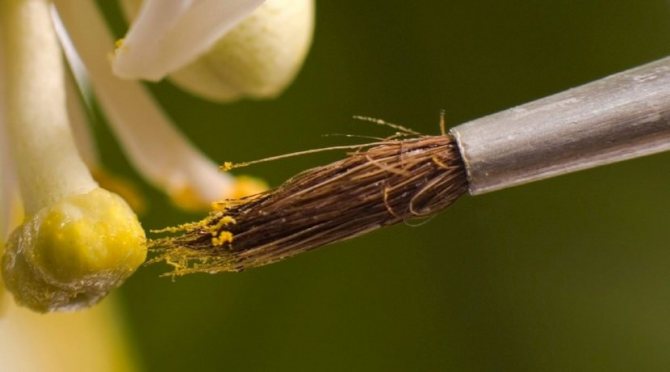

To do this, during the flowering period, you need to take an ordinary brush and walk it over each flower. This will transfer pollen from bud to bud. It is advisable to do this procedure several times during the entire flowering period.
Growing blueberries in the garden: choosing a variety
Thanks to the hard work of breeders, today there are many varieties of blueberries.
Let's consider only the most popular ones:
Of course, it is impossible to describe all the known varieties of the crop. But due to the variety, it is possible to choose the appropriate option. And then growing blueberries in the garden will bring true satisfaction.
Berries are often used to treat various diseases because they contain large amounts of manganese, organic acids, carotene, tannins and vitamins.
Which varieties are suitable for growing
To grow a berry shrub on a windowsill, you need to choose low-growing varieties, since hybrids up to 1.5 meters in height, although they have high yields, will not be able to develop normally in indoor conditions. Buy several bushes of different varieties and periods of fruiting at once.
Did you know? Blueberries can improve vision, skin condition, and are also used for general rejuvenation of the body.
The best representatives in this case will be varieties whose height rarely exceeds 1 m, namely:
- Top Hut Is the first hybrid variety that combines the best qualities of blueberries and blueberries. A low-growing shrub, the height of which does not exceed 40 cm, is characterized by a beautiful compact spherical crown, which in spring is covered with white-cream inflorescences, and at the end of summer bears fruit abundantly.
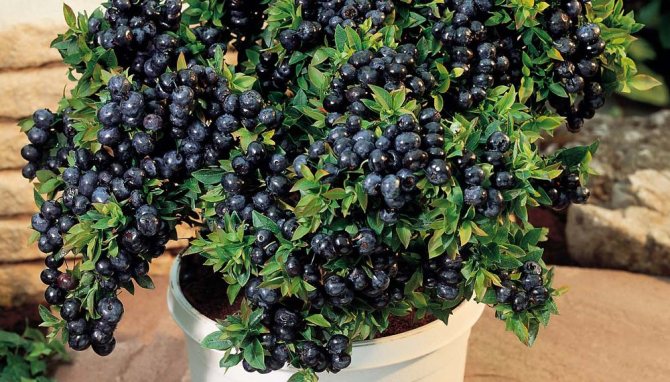

- Forest pearl - a popular variety of dessert blueberries with a height of about 30–40 cm. Fruits do not ripen at the same time, they have a sweet taste with a slight sourness.


- Chippeva - shrubs with a very dense crown, grow up to 1 m in height. Juicy sweet fruits ripen in mid-July, so the variety belongs to the early ones.
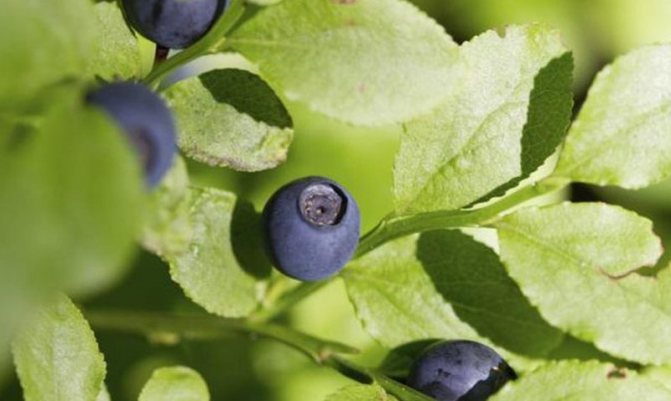

To grow blueberries in a container, you need to know the winter hardiness of a particular variety. Such information can be found on Internet resources or, more reliably, you can consult a garden center or nursery where you are going to buy seedlings.
It is better to buy varieties that can withstand colder winters than those prevalent in your area. For example, for southern latitudes, Sunshine Blue is quite suitable, and for northern regions it is better to give preference to Top Hat blueberries.
Cityate is also like growing ginger in an apartment.
Secrets of planting shrubs at their summer cottage
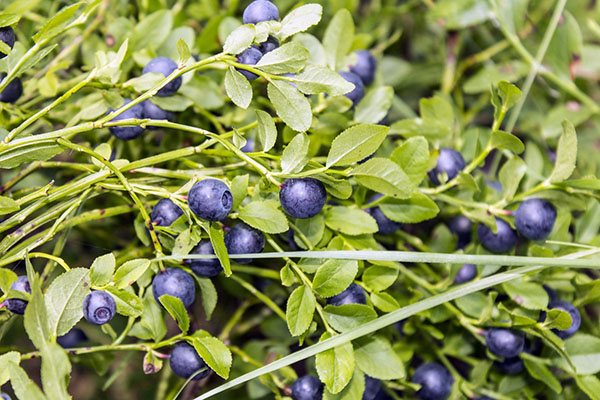

Since blueberries naturally grow in humid forests, the first step is to choose a suitable place for them.From this it follows that the plant loves partial shade and an abundance of moisture. If you plant a crop among fruit trees or ornamental shrubs, it will bear an abundance of fruit.
The cultivation of blueberries begins with the preparation of the soil, since it does not develop well in ordinary land. There were cases when young bushes dried up in the midst of fruiting.
Therefore, in the garden where the culture will grow, the soil is first prepared:
- a funnel with a size of 150 by 150 cm is pulled out, the depth of which is at least 60 cm;
- the excavated soil is mixed with peat (2: 1);
- powdered sulfur is added to the mixture to give it the necessary acidity;
- for the severity of the substrate, a little river sand or last year's oak leaves are introduced.
The process of preparing the soil begins in August so that by the time the plant is planted, it is in perfect condition. However, many are wondering when to plant blueberries, in spring or fall. Experts say that it is best to do this in October.
Landing rules
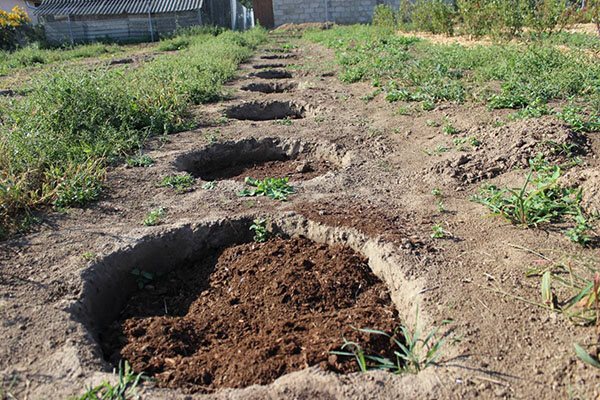

Most often, small shrubs are used for growing crops, which are no more than 3 years old. They are planted at a distance of 1.5 m from each other. If several rows are supposed, then the gap should be at least 2.5 m. It is important to understand how blueberries grow in the country and when they bear fruit.
The prepared pits are irrigated with water, after which the planting material is lowered there. If there is an earthen lump on the rhizome, it is carefully loosened, being careful not to damage it. Then the plant is lowered into a hole, sprinkled with soil and the upper ball is compacted.
To preserve moisture, you can sprinkle the area near the trunk with fallen leaves or sawdust.
Recommendations for growing blueberries
Before planting blueberry seeds, you need to choose an area. In a place where water stands for a long time during the rains, sowing is not recommended, as this indicates that the groundwater is close to the surface.
Proper plant care is as follows:
- When buying planting material, you need to remember that blueberry sprouts should be in a pot, but not with an open root system. Before planting, it is dipped in water and only after that is it planted in the ground;
- Blueberry bushes should be placed at a distance of one meter from each other;
- After planting, the soil is necessarily mulched, and weeds are removed from time to time;
- Watering blueberries should be at least twice a week, and at least two buckets of water should be poured under one bush;
- In the spring, it is necessary to do pruning, during which all diseased and dry branches are removed, then the shrub will look neat and well-groomed;
- The bushes are healed once a year, they do it in spring or autumn.
Moreover, every three or four years, mineral fertilizers must be applied under the blueberry bush. To do this, you can use complex fertilizers that are used for heather plants. To scare away birds who like to feast on blueberries, you need to use a net or tinsel left after celebrating the New Year. Since garden blueberries are very demanding on growing conditions, they must be constantly looked after.
Blueberries are a very whimsical plant, but with proper care of them, the gardener will get an excellent harvest of tasty, and at the same time healthy berries. To do this, you need to make every effort and patience.
Available ways to propagate blueberries
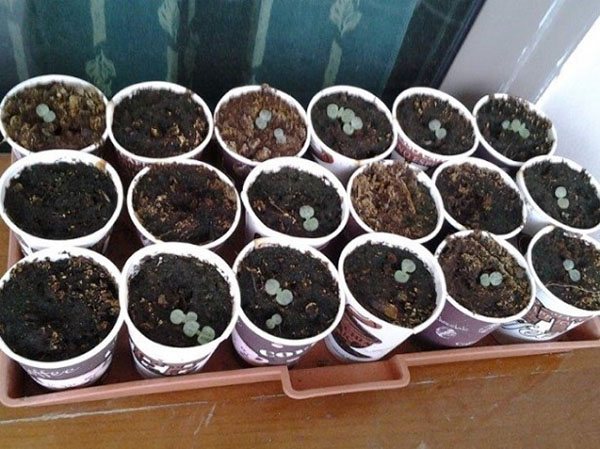

To arrange an exquisite berry meadow in your garden, it is not necessary to immediately acquire a lot of bushes. It is enough to plant one plant, and over time, start breeding blueberries on the site.
There are several ways to create a berry meadow in the garden:
- using seeds;
- cuttings;
- division of the bush.
Let's consider in detail the technology of each option.
Enduring "classic of the genre" - seed reproduction
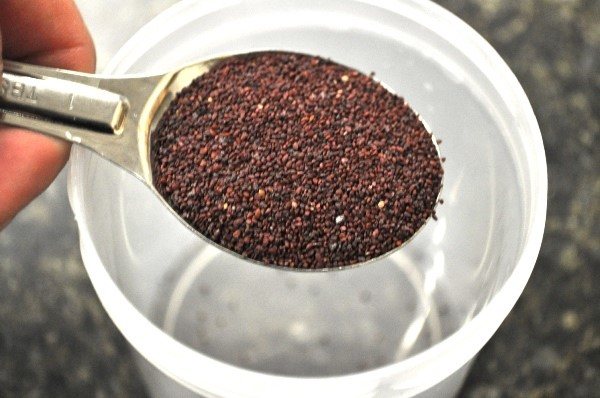

The simplicity of this method makes it possible to grow garden blueberries even for novice gardeners.Planting material is taken from fully ripe fruits. Often they are colored deep blue, dense and quite elastic to the touch. Then they are thoroughly crushed, after which they are poured with water. Seeds that have sunk to the bottom of the container are ideal raw material for planting. Then they are taken out of the water to dry thoroughly.
Although the seeds can be sown immediately, some gardeners advise placing them in the refrigerator for stratification.
The next step is to mix peat with sand and fill a suitable container. The surface of the soil is slightly moistened with a spray bottle, after which the seeds are sown. To create a greenhouse effect, the container is covered with foil or glass. At the same time, the crops are aired daily and watered regularly. The greens will appear in 2-3 weeks.
If the seeds were sown in the fall, the containers are kept in a room where the room temperature is maintained. In the spring, seedlings dive, leaving stronger varieties. Blueberries are planted on the garden bed only after a year.
Read also: Technique for growing a garden buttercup
Using cuttings
Division of bushes
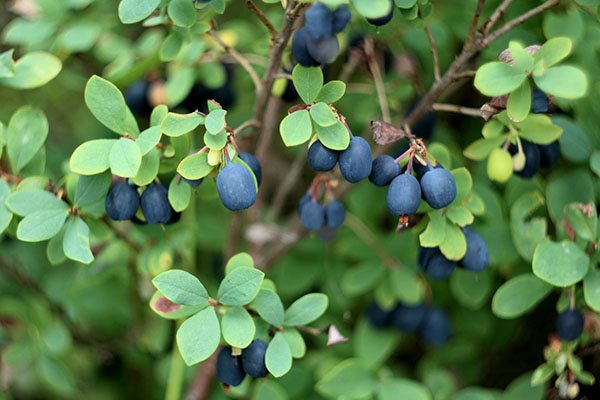

The procedure is carried out in the middle of autumn. To do this, dig up an adult plant and use a knife to divide it into several parts. Each of them should have approximately 5 buds. Bushes are planted in a prepared area.
As you can see, planting and caring for blueberries in the garden does not require any special skills. It includes regular watering, soil fertilization, and periodic pruning. And the breeding process is available even to an inexperienced gardener. Applying the advice, it is not at all difficult to grow a lush blueberry meadow in your summer cottage.
Features of planting blueberries - video
When can the first harvest be harvested?
Berries on blueberry bushes that have grown after planting seedlings appear, as a rule, in the 3rd year after planting. If you started the process by sowing seeds, such bushes will begin to bear fruit later, perhaps even after 5 years. You need to pick berries that have a rich dark blue color. They should come off easily if the fruits are tenacious - it is quite possible that they are not yet ripe.
Learn how to use blueberries for a laxative and firming effect.
Berries can be stored in the refrigerator for up to 10 days if properly processed: you need to rinse the fruits with cool water, spread them on a paper towel to dry, and then transfer them to a shallow container, which is placed on the bottom shelf of the refrigerator.
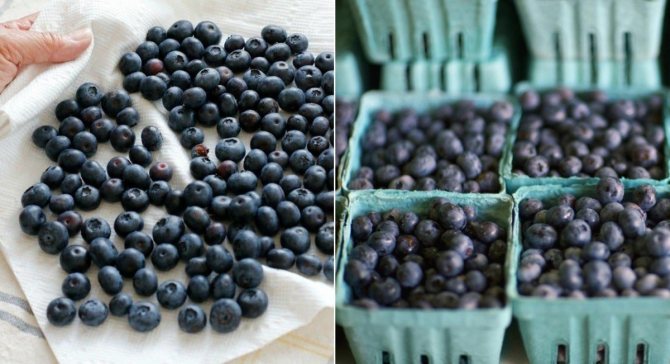

Blueberry seedlings - modern planting and care technologies
The taste of blueberries is not familiar to many, but those who once tasted this berry will never forget about it. Sweet, slightly tart and incredibly healthy blueberries are a must-have treat for everyone. And if there is a small piece of undeveloped land in the garden, it's time to plant blueberry seedlings on it. The requirements for planting and caring for this berry are akin to planting grape seedlings... And we will share the secrets and nuances of growing fruit bushes of blackberries in our article.
Delicious blueberries for your garden
Diseases and pests of blueberries
One of the main advantages of caring for blueberries - both in natural and at home conditions - when grown on a garden plot in the open field, it rarely suffers from diseases and insects.
Flower bed design. TOP 10 simple and effective techniques
For the prevention of fungal ailments (such as moniliosis, white spot, etc.), berry bushes should be sprayed with preparations containing copper before and after flowering. The concentration of the solution should be low. Viral infections that can infect blueberries are dwarfism, mosaic, filamentous branches, or mottling. If symptoms of these diseases are detected, dig up diseased plants and burn them.
Among insects, blueberries can be disturbed by aphids and scale insects. In the first case, insecticides will come to the rescue, in the second - Bordeaux liquid.The best prevention of the appearance of these pests is good care: burning foliage in late autumn, mulching, treating blueberries with anti-insect drugs on the eve of shoot growth.
At a time when berries are already ripening on the bushes, birds can flatter the future harvest. To protect against them, the planting of blueberries is covered with a thin mesh fixed to the frame. A Christmas tree rain is also suitable: you need to hang it on ropes stretched next to the beds.
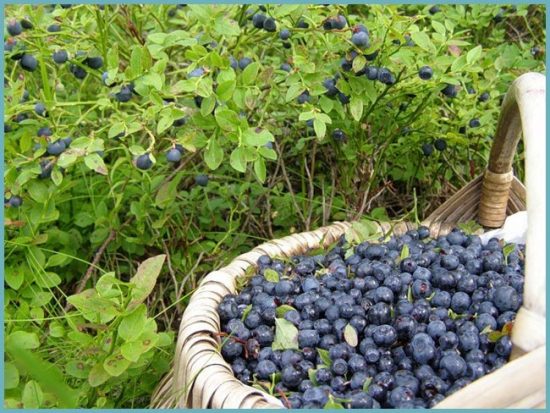

Garden and forest - not to be confused
When we talk about planting blueberries in the garden, we are talking exclusively about garden varieties. In no case should you confuse them with forest ones, and try to plant the latter in the garden, bringing them from the forest. Despite the same name, these are completely different berries. They are not relatives at all. Forest blueberries often grow in Moscow and the Moscow region, but garden varieties came to us from North America and they were grown by breeding the American Blueberry berry.
You can buy garden blueberry seedlings in an assortment of varieties in nurseries of the country.
Blueberries and features of their cultivation
Before we start figuring out how to grow blueberries from seeds and cuttings, let's find out what kind of berry it is in general and why gardeners are so interested in it.
Wild blueberry is a small shrub that grows in the coniferous forests of Siberia, the Urals, and central Russia. This berry is extremely useful, especially for maintaining eye health. Not to mention how delicious it is.
For its delicate, mild taste, it has long been loved by both confectioners and diet food manufacturers all over the world.
European farmers took up the cultivation of blueberries on an industrial scale, and faced a problem - wild blueberries, even when the ideal growing conditions were created, did not want to grow. Therefore, varieties of garden blueberries were bred.
How do blueberries multiply? If you decide to take up the cultivation of blueberries in your summer cottage, remember the following:
- Do not try to bring blueberry bushes from the forest and plant. There will be little sense, but spend enough time and effort.
- Reproduction of blueberries occurs by dividing adult bushes, seeds and cuttings.
- For the production of our own planting material, we take only varietal berries.
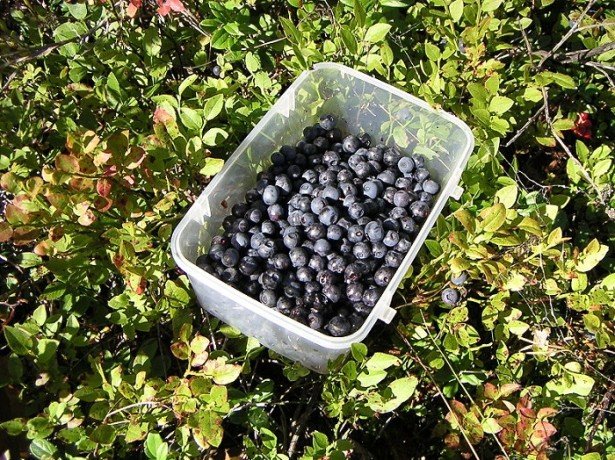

For the production of our own planting material, we take only varietal berries
Where to plant bushes
For planting blueberry bushes, it is necessary to select the sunny sides of the site, preferably from the south side. In this case, it is necessary to pay attention to the presence on the site of any protective structure from the northern part of the garden. Ideally, this should be a pocket protected on three sides and exposed to the sun from the south. And both buildings and tall ones can act as protection. seedlings of fruit trees or ornamental shrubs.
By the way, the place for blueberries should not be small around the perimeter, because we are not talking about tiny forest bushes. Commercial blueberry varieties can grow up to 1.5 meters in height and the stems of the plant are very sprawling. If you are going to plant blueberries in rows, you must maintain a distance between them of at least 1.5 meters.
Blueberry seedlings from the nursery
In short, you can list what garden blueberries love:
- maximum sun;
- space;
- black soil;
- wet soil.
Based on these criteria, and you need to select a place for planting bushes in the ground.
When is the best time to plant
In most cases, the time to plant blueberries is individual for each region of the country. Since blueberries love coolness, it is recommended to pick up a cool autumn or spring day for planting.
Why is it better to plant in spring
There is an opinion, and it is not unreasonable, that in the spring one should refuse to plant blueberries in the country. However, it is only relevant for residents of the southern parts of the country.
Important! In the first few months after planting, it is recommended to artificially shade the bushes. Otherwise, the sun's rays can burn the delicate foliage.
The best period for planting blueberries in the central and northern regions is late spring. It is at this time of year that the frost will not return. Over the summer, new seedlings will get stronger and independently prepare for the upcoming wintering.
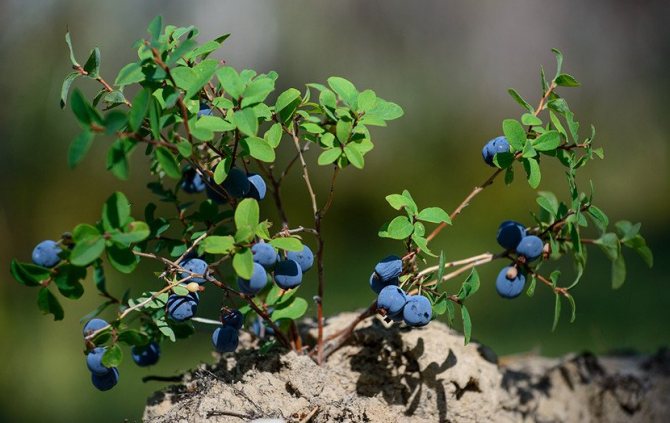

If you plant the bushes in the fall, there is a high probability of the death of the plant, because during this period the first frosts on the ground are already beginning to appear, and the temperature drops at a high speed.
Planting rules for garden blueberries
In the climatic zone of our country, this culture is recommended to be planted in the fall. In the southern regions of the country, blueberries can be planted in the spring, when the threat of severe frosts has passed.
Important! The bushes are planted before the beginning of the growing season with the obligatory use of a hydrogel, which stimulates the growth and rooting of the root system. As practice shows, seedlings planted on a hydrogel grow 2 times faster.
Before you start planting, you need to pay attention to the preparation of the planting pit. The place for planting should be spacious - 60 cm wide, about 80 cm deep. At the bottom of the planting pit, drainage is required in the form of a ten-centimeter layer of pebbles or rubble.
Attention! Pay attention to the composition of the soil - sandy ones are mixed with peat and humus, loamy with sand, peat and manure.
After introducing the soil mixture into the planting pit, a hydrogel is added. It is important to understand here that a dry concentrate in bags is taken as a hydrogel, and not a colored material used by designers to decorate interiors.
For each seat, it is necessary to add 3 liters of hydrogel (for this, 10 grams of dry concentrate is diluted in three liters of water, waiting for the formation of a jelly-like mass).
Do blueberries really need hydrogel? It is necessary if you want to increase the survival rate of bushes and achieve early fruiting. The hydrogel provides a comfortable hydro-mode of the soil in which the plants are planted. The gel protects the bushes from drying out and waterlogging. It does not last long, no more than three years, and thanks to it, the amount of watering the bush is reduced to once a month.
After introducing the hydrogel into the planting pit, add soil, slightly mixing it with the rest of the substrate, and wait for the soil to settle - 2 weeks.
Attention. The soil for blueberries should be acidic. To do this, it is necessary to add peat to the soil, and colloidal sulfur under the roots of the plants.
When planting seedlings, it is necessary to monitor the placement of the root collar in order to prevent its deepening. Blueberries are planted directly with a clod of earth, protecting fragile roots from mechanical damage. After planting, the bushes require watering and mulching, preferably with dry needles. In the first week of growth, blueberry seedlings should be covered, avoiding the scorching rays of the sun.
Choosing a landing site
According to the description, a cultivated berry is practically no different from a forest one, but the procedure for planting, leaving and choosing a place is completely different. If in the forest the bush is constantly in the shade, then in the garden it will be best in a sunny place. If there is not enough light, the amount of the crop will decrease, and the berries will decrease in size.
Strong winds, especially cold in winter, are considered one of the enemies of cultivated varieties. Therefore, the southern sections of the garden are chosen, which are practically not ventilated. This can be a small backyard or a hedge. A special microclimate is often created here. And long-lying snow helps protect plants from harmful frosts. In these cases, the dacha is an ideal place to grow a plant.
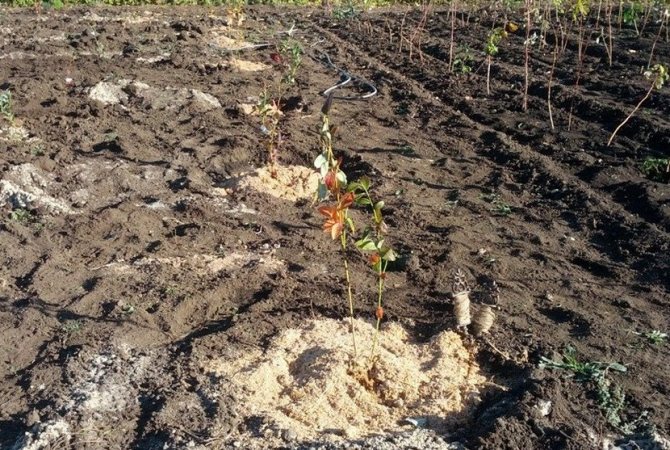

Care for blueberries after planting
Unlike many fruit shrubs, blueberry seedlings need root and foliar feeding immediately after planting.
Attention. In no case should you touch the ground under the roots of the bushes. All fertilizers for this crop are applied in liquid form, without loosening.
Potash and phosphorus fertilizers, as well as a solution of colloidal sulfur, are used as root dressings.The plants are fertilized exclusively in the evening, watered with a watering can, making sure that the temperature of the solution in the watering can is higher than the air temperature.
Read also: Rules and dates for planting dahlias in spring
Proper care of the bushes guarantees high yields
Foliar dressing is a solution of various microelements. You can spray the bushes from a spray bottle, also in the evening, to exclude possible leaf burns during a sunny day.
The rest of the principles of competent care are based on the following procedures:
- watering - up to twice a month;
- weeding - gently, without disturbing the mulch.
Blueberries: the best varieties


Blueberries are successfully grown in the gardens of Russia - taking into account the climatic features of the region, only the best varieties have taken root in our country. They differ not only in the ripening period and yield, but also in the height of the bush. The tallest varieties are considered:
• Bluestar 701 • Patriot • Chick 725 M • Toro • Amanda 818 M • Northland • Johnny 71G M • Northblue • Kerry 728 S
On average, plants grow up to one and a half to two meters - they are significantly superior in this forest "relatives". Their yield is high (starting from the age of seven - about 8 kg from each bush). The lifespan is several decades, and frost resistance inspires respect (plants can withstand temperatures as low as -30 degrees Celsius).
The varieties have an average height:
• Elizabeth • Nelson • Herbert • Ivanhoe • Jersey
The smallest varieties are considered:
• Kovil • Sunrise • Erliblu
Ripening dates and productivity of blueberries
Do you want to get a harvest of berries throughout the warm season? Then plant varieties with different ripening periods on your site. An early harvest of blueberries is provided by the following varieties:
• Amanda • Duke • Spartan • Chick • North Country
Description of the Spartan variety
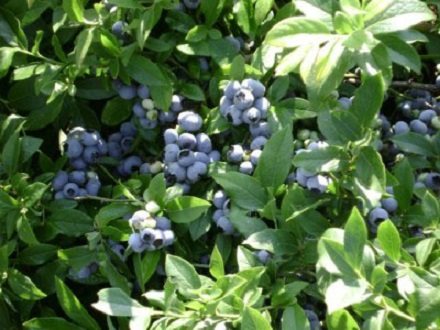

Blueberry variety Spartan
Plant height is about 2 m (at first it grows slowly, but then develops faster). Delicious berries are quite large in size, which is one of the advantages of the variety. The yield is high and stable. Plants are not afraid of a drop in temperature. The variety is decorative - young leaves have a reddish tint.
• Denis Blue • Bluecrop • Bluegold • Toro • Herbert
Description of the Blukrop variety
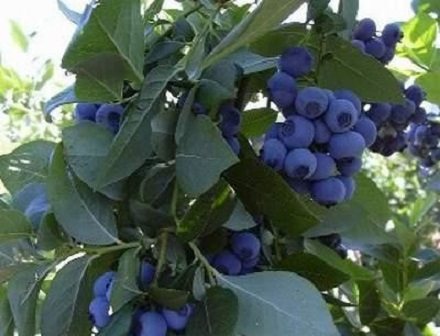

Blueberry variety Bluecrop
This is a tall variety - the plants grow up to 2 m in height. The berries are medium in size and have a tart taste. The yield is high - up to 9 kg per bush. Plants tolerate drought well, they are not afraid of frost. The main disadvantages of the variety are intolerance to high humidity, a tendency to disease, the need for increased pruning.
• Bridget Blue • Elizabeth • Legacy • Chandler • Elliot
Description of the Legacy variety
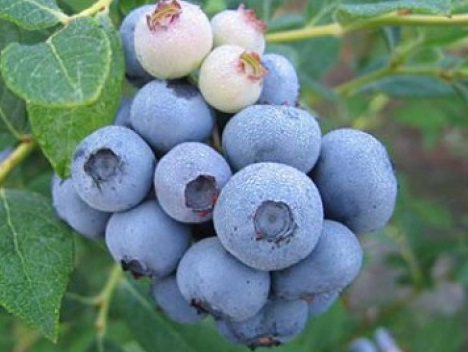

Blueberry cultivar Legacy
Gardeners fell in love with this variety for its high and stable yield (the average is 6 kg per bush). Plant height can reach 2 m. The bush is erect, dense. The berries are medium in size and have a sweet taste and pleasant aroma. The fruits are easily torn off, which allows harvesting in a mechanized way.
Blueberry varieties for the Moscow region
Many of the above varieties of garden blueberries are grown in the Moscow region and the European part of Russia. In particular, the following are very popular with gardeners:
• Bluecrop • Herbert • Spartan • Nelson • Top Hut (hybrid of blueberries and blueberries)
Description of the Top Hut variety
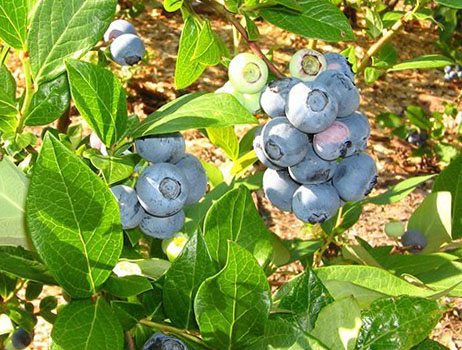

Blueberry variety Top Hut
Unlike previous varieties, Top Hut is not very tall - the bushes reach a height of 30-40 cm. The berries are large, sweet, rich in their chemical composition. Plants are decorative, they begin to bloom at the beginning of summer (they are often grown in containers on verandas and balconies). One of the advantages of the variety is its high frost resistance (plants can withstand temperatures as low as -45 degrees Celsius).
Blueberry varieties for Siberia and the Urals
For cultivation in regions with unfavorable climates, frost-resistant varieties of blueberries are suitable.Despite the fact that the “progenitor” of cultivars feels great in Siberia, not all plants bred by breeders have retained optimal frost resistance. The best choice would be varieties:
• Top Hut • Bluecrop • Bluegold • Bonus • Duke
Description of the Bonus variety


Blueberry variety Bonus
This variety is characterized not only by large-sized fruits, but also by high frost resistance - it was bred for regions with unfavorable weather conditions. The fruits have excellent taste characteristics, they are dense, sweet, aromatic. The yield is high - up to 5 kg from each bush.
Blueberries are a useful plant that you can grow in your garden. And although high-quality seedlings are quite expensive, the monetary investments will justify themselves - the plants live long and are distinguished by high yields.
How to properly grow garden blueberries - planting and care tips
Adding an article to a new collection
Before you buy seedlings of tall garden blueberries, find out what are the features of this plant, where and how to plant it and how you need to care for it so that the bushes grow large, strong and enjoy a good harvest for many years.
The beneficial properties of blueberries have been known for a long time. Moreover, all the miraculous properties of this plant are not purely "folk beliefs", but are confirmed by multiple scientific studies. Be sure to plant some blueberry bushes in your garden if you want to be healthy, full of energy and live a long and happy life!
Regular consumption of blueberries (it doesn't matter if they grew in a swamp or in your garden) helps slow down the aging process of the brain and rejuvenate the body as a whole. And thanks to the unique combination of organic acids, phenolic compounds and plant hormones, blueberry berries improve the functioning of the thyroid gland, protect against atherosclerosis and heart disease, have vasodilating, anti-inflammatory, antitumor, choleretic, diuretic and radioprotective effects.
But unlike most crops growing in our country house, blueberries prefer acidic soil (pH 3.5-4.5). Therefore, the standard tips for planting and growing berry bushes in this case will not work, but, on the contrary, will lead to the death of the plant.
Becker specialists share tips on how to properly plant seedlings and care for tall blueberries so that the bushes take root well and start growing quickly.
Technology for growing blueberries from seeds
The method is quite simple. Ripe, large berries need to be mashed and filled with cool clean water. Let our "compote" stand a little. As a result, the pulp and empty seeds will float. Drain carefully. Then we carry out this simple procedure a couple more times. The result is clean, plantable blueberry seeds.
Place the resulting seeds on a napkin and spread evenly over it. As it dries, the seeds will stick to the paper. This makes them easier to plant, however, like most small seeds.
Blueberry seeds need stratification. Therefore, plant your seeds in late autumn. What is called an ice crust, and immediately to the prepared bed. If you used imported frozen berries to propagate blueberries by seeds, consider that they have already been stratified for you. In this case, planting can be postponed until spring.
In the spring, the bed must be covered with foil or glass, and make sure that the soil is moist. After the emergence of shoots, after 2-3 weeks, we remove the shelter, but we continue to control the humidity level. Young seedlings grow very slowly. Over the summer, literally by a centimeter. In the fall, we transplant the finished seedlings to a permanent place. And before the onset of frost, be sure to cover it with spruce branches. With all the winter hardiness of blueberries, young seedlings still cannot overwinter without shelter. Having learned how to grow blueberries from seeds, we will analyze the second method.
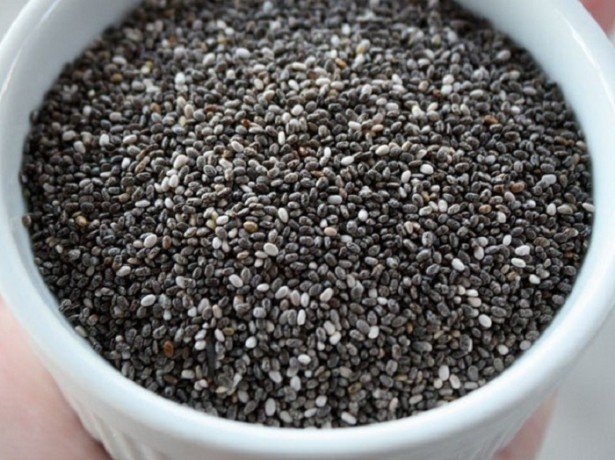

In spring, the bed must be covered with foil or glass, and make sure that the soil is moist
How to properly plant blueberries
Seedlings of this plant are usually sold in containers. Therefore, it does not matter when you plant blueberries - in spring, fall or even summer - the planting instructions will be the same.
First of all, walk around your site and choose the sunniest place on it, located on a small hill, but at the same time protected from the cold north wind. Remember, shady, poorly ventilated and low-lying areas with heavy soil are not good for blueberries.
If you want to harvest a good blueberry harvest every year, plant not one, but several different varieties of blueberry.
Now that you have decided on a place, you can start preparing the planting holes. Usually they are recommended to be made in the following sizes:
- 50 × 40 cm on light soil;
- 60-70 × 25-30 cm - on heavy soil (with a mandatory 5-10 cm drainage layer).
The most suitable for blueberries are peat, sandy and sandy loam soils. If the soil in your garden does not meet these parameters, fill the planting pits with a special soil mixture consisting of 5 parts of red high-moor peat, 2 parts of coniferous sawdust and 1 part of sand.
Planting blueberry seedlings is a simple matter, but it requires adherence to certain rules. The main one of them says: you cannot plant plants with tangled and bent roots! Therefore, shortly before planting, dip the seedlings (directly in containers) into water for 10-15 minutes, and then carefully remove them from the containers and carefully knead the intertwining roots with your hands. If you do not do this, but plant blueberry seedlings as they are, for the first few years they will develop very poorly, and then they will completely die.
Place the blueberry seedlings in the pit in such a way that, after backfilling with the substrate, they are 5-6 cm deeper than they grew before. Form irrigation holes (holes) around the bushes and pour at least 5 liters of water into each of them. When the water is absorbed, cover the tree trunks with sawdust or litter of coniferous forest (layer thickness - 5-8 cm). This will prevent moisture from evaporating.
Miniature and low-growing blueberry varieties (such as Big Blue, Nord Blue, etc.) are recommended to be planted at a distance of 80 cm, medium and vigorous (Blue Berry, Double, Duke, Lateblu, Elizabeth, etc.) - at a distance of 1, 2-1.5 m.
How to plant blueberries
Planting blueberries is pretty straightforward, but there are some rules to follow. How well the bush will take root depends on the responsibility you take with the choice of soil and, in fact, the planting material itself.
Choosing the right pot
The first step is to prepare the pots. It is important to pay attention to the size of the container: its diameter should be in the range of 50-60 cm, and the depth should be about 40 cm. Be sure to make sure that there are drainage holes in the bottom of the pot, through which excess water will escape. If the roots of blueberries remain in stagnant water, the process of their rotting will begin, as a result of which the culture may die.


Regular garden soil for growing blueberries on a windowsill will not work. It is best to purchase a ready-made mixture - compost for heather, which is an acid-base mixture. You can buy soil that is sold for azaleas, camellias or rhododendrons. Fill the pot 2/3 of the height with this mixture. Lay a layer of compost on top.
It is advisable not to be lazy, go to the forest and collect pine bark, grind it and mulch the soil. Such a cover will not only "remind" blueberries of their natural habitat, which is a forest, but will also help to preserve soil moisture.
Did you know? The seeds do not have to be obtained from varietal berries.
—
they can be "obtained" even from forest blueberries, but seedlings dug out in the forest do not take root at home.
Preparation of planting material
In nurseries and horticultural centers, seedlings are sold with a closed root system, most often in containers. Before planting, it is necessary to carefully remove the bush from the container and dip the rhizome together with the earth into the water - only after that you can start planting.
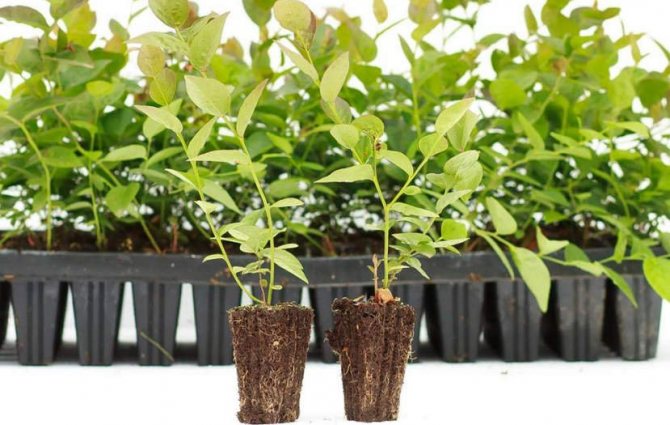

Processing of seedlings with rooters, such as "Rhizopon", is also allowed. The product has a powdery consistency. Before processing a seedling in it, you do not need to moisten the roots.
Planting process
To grow blueberries at home, you can purchase ready-made seedlings or grow them yourself from seed. The first option is more acceptable, since it will significantly bring the moment of harvesting the first harvest. Sowing seeds is a long and painstaking process, but quite interesting, in addition, it allows you to get a larger amount of planting material at a time.
Check out the most popular blueberry and blueberry varieties.
Saplings
When the seedling is already in your home and the pot is ready, you can start planting, which should take place as follows:
- Place a layer of pebble drainage on the bottom of the container.
- Fill the pot with the mixture as described earlier in Choosing the Right Pot.
- Form a planting hole, which should be slightly larger than the rootstock of the seedling with an earthen ball.
- Place the seedling in the hole and cover.
- Dilute ½ tsp in 1.5 liters of water. citric or oxalic acid and water the planting.
- Grind on top with pine bark and compost.
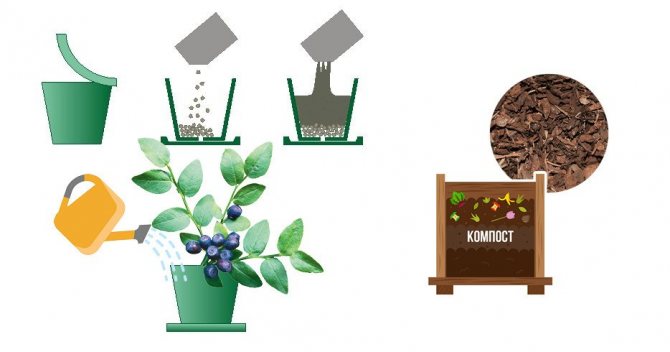

Seed
To plant seeds, they must first be extracted from the berries. This is done very simply: several fruits need to be folded into a glass, heat well and fill with water. You can knead the berries a little more in the water with your fingers. After this procedure, the seeds will sink to the bottom of the glass, and the remnants of the berries will remain on the surface. Next, you need to carefully drain the water and remove the seed.
Learn how garden blueberries can be propagated.
Next, you need to follow this algorithm:
- Put the seeds in water for a day to swell.
- Prepare a container for planting. Make sure it has holes to drain excess moisture.
- Fill the container with peat.
- Immediately before planting, process the seeds in a weak solution of potassium permanganate for 30-40 minutes - this will save the material from diseases.
- Plant the seeds into the ground 1 cm deep.The distance between them should be about 2 cm.
- Water the soil with a small amount of acidified water (for 3 liters of water, 1 tsp. Citric acid).
- Cover the planting with foil or glass and place in a warm place.
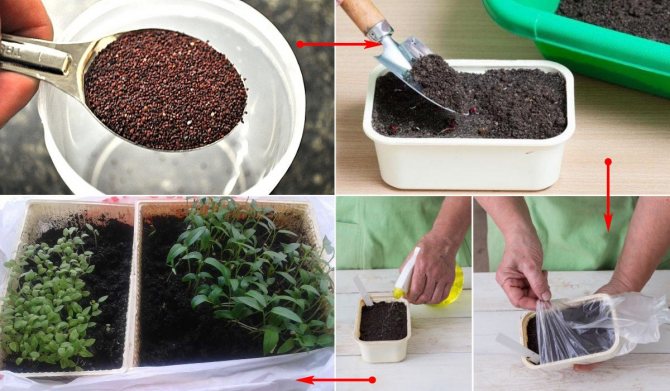

The seed germination process can take several weeks. Throughout this time, you need to raise the cover every day, ventilate the "greenhouse" and water the soil to keep it moist. After the first shoots appear, the film is removed completely.
The soil should be watered abundantly, compacted and sprinkled with a layer of sawdust mulch. The container with the planting should be kept in a warm room throughout the winter. Watering can be reduced to several times a week. In the spring, already grown seedlings can be planted in separate pots.
Video
Blueberry is a low and highly branched berry shrub from the heather family. It easily and unpretentiously tolerates winter frosts; blueberries can be found beyond the Arctic Circle. In the wild, it grows in mixed or coniferous forests, most often in the latter. Some pine forests are so overgrown with blueberry bushes that they are called so: blueberry pine forests.
In general, this neighborhood is not accidental. Like pine, blueberries thrive on acidic soils with close groundwater. It is also a shade-loving shrub, so it should be planted under the canopy of trees that can provide constant partial shade under them.
Planting blueberries
Before planting blueberries, it is necessary to prepare in advance the area where it will grow in the future.Usually garden soil is not acidic enough, so premature planting of blueberry bushes in unprepared soil can lead to yellowing of the leaves, stunted development and even death of the plant. For successful cultivation, pits 150x150 cm in size and 60 cm deep each are prepared for each bush. The dug soil from the pits is mixed with peat chips (in a 2: 1 ratio) to further acidify the soil, add powdered sulfur. Also, if possible, you can add kitchen cleaners and oak leaves, and river sand in heavy soils. Such preparation is carried out in advance, the main thing is that the prepared soil settles in the pits before planting. For example, if you planned to plant blueberry bushes in October, the soil must be prepared no later than September.
Blueberries are planted in spring or autumn, bushes planted in the autumn period, from October to early November, take root best. The best option for planting would be two- or three-year-old bushes with a lump of earth on the roots. The root ball must be wet before planting: bushes planted with dry roots, in most cases, do not take root and die. Before planting in the previously prepared soil, we dig a depression to the size of the root ball, where we plant the bush. During planting, we loosen the ground on the root ball and carefully straighten the roots. Then we fill the hole, compact the soil around the planted bush with our feet and water it abundantly. If possible, we mulch the ground at the planting site; as mulch, you can take fallen leaves, sawdust or peat. If you are replanting old bushes (over 3 years old), after planting, you need to prune the branches to a height of 20 cm - this will help the bush to settle down better in a new place.
Blueberry propagation
Propagate blueberries by seeds or by dividing the bush.
Common blueberries. Growing according to all the rules
1. Pruning. In order for the black berry in the garden to grow correctly, evenly and give good fruits, it must be constantly looked after. To begin with, it should be trimmed, that is, cut off excess processes. Plants are suitable for this from three to four years. All diseased, damaged and dried branches should be eliminated. Cutting height 20 centimeters. Ideal when 5 to 9 full and strong branches remain on the bush. This will be the main part of the whole bush. If the plant produces many young shoots on which buds develop, they still need to be removed. It will not work normally to harvest from such branches. The berries will be too small and rare.
Old bushes, which are already 15 years old or more, should be cut vigorously. The height of the stem left is about 20 centimeters. Thus, the bush rejuvenates and continues to bear fruit at the same level.
Spring is the most favorable for pruning and forming bushes. The main thing is that frost does not hit after this procedure. Branches should not be pruned too late, especially when flowering begins. This will lead to lower yields.
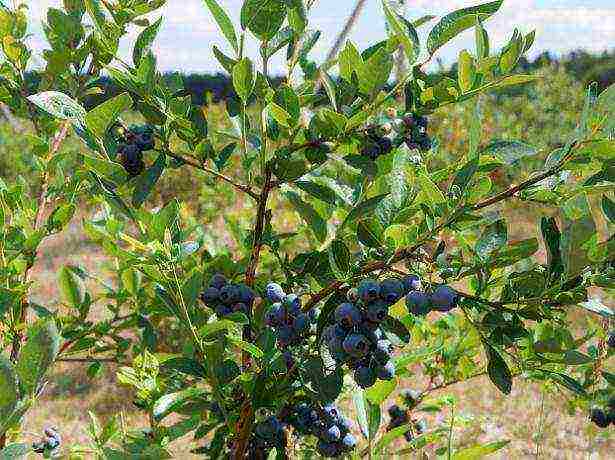

Spring is the most favorable for pruning and forming bushes
2. Watering. The shrub should be watered regularly. But it's important not to overdo it. The soil under the bush should be slightly damp at all times. To do this, you can use mulch. If blueberries are in an open area, on hot days it is necessary to spray, or arrange small reservoirs next to the plants, placing buckets, basins and other containers with water. If the soil is not acidic enough, pour it with slightly acidified water (1 teaspoon of citric acid in a bucket of water).
3. Top dressing is an important condition for successful blueberry cultivation and good fruiting. It is worth noting that the plant will not tolerate actively decomposing organic matter. It is best to apply a full range of mineral fertilizers in early spring or late autumn.
Blueberry care video
4. Harvesting of garden blueberries occurs in June and lasts until the beginning of September.The fruits will ripen unevenly throughout the bush, and you should not wait for a one-time harvest. They will have to be collected every 5-10 days. Harvested berries are blue-violet or black in color. In order not to damage the berry during collection, it must not be plucked, but rotated. At zero temperature, the harvested crop lasts up to 6 weeks.
Common blueberries are not subdivided into varieties. But the myths about it are created by the engine of trade -. After all, many people want to have this plant on their site, so they buy seedlings of the so-called garden blueberries in the markets, the cultivation of which has its own subtleties. It is worth considering carefully the choice of such planting material, because often instead of ordinary blueberries, you are offered a varietal blueberry similar to it. In order not to fall for a fake, grow the planting material yourself. It is, albeit troublesome, but profitable and exciting!
Download Original] ’class =" imagefield imagefield-lightbox2 imagefield-lightbox2-resizeimgpost-500-500 imagefield-field_imgblogpost imagecache imagecache-field_imgblogpost imagecache-resizeimgpost-500-500 imagecache-field_imgblogpost-resizeimgpost-500-500 ″>


Blueberries are a very healthy berry that contains a lot of vitamins and minerals. The shrub grows mainly in coniferous forests and shady places. To
blueberry
has taken root in the beds, she needs to create comfortable conditions. It is not difficult to grow a berry at home, the main thing is to know how to properly plant and care for it.
Blueberries: easy care
I poured a little. And after that, to my surprise, the growth began to wither. What kind of attack? I rushed to rummage on the Internet and read that blueberries need not only peat mixture, but also acidic soil. What a fussy!
Okay, the soil has become acidified by abundant application under the roots of finely ground sour grass (hare cabbage), finely ground and infused in cooled boiling water.
There is a lot of it for this business, but it is simple to collect and cook: I plucked it at the root, tamped it in a bucket, and most importantly - without putting it off, I washed it down with cooled boiling water.
By the morning, a pale green broth turned out, with which the bushes were shed. Why did I put on so much of it? And with a long-range scope, I'll tell you now.
Description of garden blueberry
Garden blueberry (Vaccinium corymbosum) is one of the variants of the name Blueberry, bred selectively in North America. Several dozen varieties are used to harvest large, beautiful berries and in landscape design.
The blueberry tree is a vigorous, spreading deciduous shrub, its height depends on the climate and conditions, ranges from 1 to 3 m, the crown diameter is on average 2 m. The root system of blueberries is fibrous, densely branched. Stems of garden blueberry are straight, strong, lengthen every year due to young growth. Shoots are medium or thin, slightly ribbed, green or greenish-red, not pubescent, shiny. The growth buds of the blueberry tree are small, oblong, pointed, located along the entire shoot and in the leaf axils. Flower buds of a blueberry tree are light green, spherical, formed on new shoots - 1 apical and 2-3 lateral ones, bloom in May. Garden blueberry leaves are medium in size, green, oval, smooth, shiny, even or finely serrated at the edges. They turn red in autumn, fall off by winter.
White or pale pink, pitcher-shaped flowers are collected in racemose drooping inflorescences. Corolla with 5-toothed joint-petals. Blueberries are round or slightly flattened, up to 2.5 cm in diameter and weighing 1.4-1.9 g, sweet, aromatic. The color varies from blue to almost black, the skin of medium thickness is covered with a bluish bloom, the flesh is light, dense. The fruiting times of the blueberry tree differ depending on the variety, the average yield is 3-5 kg per bush.
Pruning
Mid-March is considered a good time for pruning the plant. Before the procedure, you need to look at the weather conditions, there should be no frosts.
Sharp pruning tool
Regular pruning is carried out 3 years after planting the seedlings. To begin with, they inspect the bush, first of all, remove dried, diseased and damaged branches.Up to 8 main strong healthy branches are enough on one bush.
In order for new shoots to grow, old branches are cut to 20 cm. If there are many side shoots on the bush, then they are removed, since small berries grow on them.
Adult shrubs aged 15 years and more are cut completely to a height of 20 cm. The procedure is rejuvenating, it allows you to preserve the yield of blueberries.
Substrate preparation and sowing
Blueberries are sensitive to light, therefore, sowing seeds at home is carried out no earlier than March. If necessary, arrange artificial lighting. In such conditions, the seeds sprout quickly and develop actively. Thorough preparation of the soil is the guarantor of seed germination and their successful transformation into a healthy plant.
Blueberries need acidic soil with a pH of 3.5 to 5.5. Soil with low acidity requires acidification.
For planting, a soil mixture is prepared, consisting of peat and coniferous litter. They are taken in equal proportions. A small amount of humus and sand will improve the structure of the soil and help grow a healthy plant.
An excellent option for the fruitful cultivation of blueberries are ready-made soils for azaleas with medium acidity.
Seeds are sown in pre-prepared pots or boxes, carefully spilled with water and covered with foil until shoots appear.
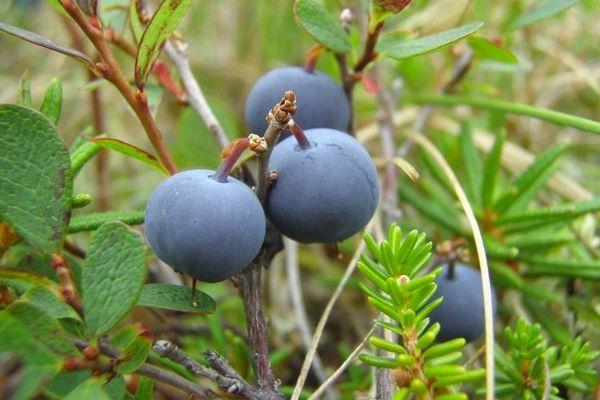

How to propagate blueberries on a private land plot?
The cost of seedlings of a favorite berry on the market is very high, which cannot but sadden gardeners. However, as soon as the plant takes root and becomes stronger, it will be possible to propagate it on its own. How can this be done? Not hard. You just need to choose one of the three available methods.
- Shrubs over 5 years old can be separated. To do this, from the side, a bayonet with a shovel is cut off from the plant part of the root system simultaneously with the branches. Thus, a real seedling is formed, which, under the conditions of fulfilling the main planting rules, quickly takes root and actively develops in a new place.
- Blueberries reproduce very well with layering. In spring or autumn, from the lower branches of the bush, it is necessary to pick up the strongest ones, bend them to the ground, fix them with brackets and sprinkle them with soil. During the summer, the shoot will take root. It only remains to be separated from the mother plant and transplanted.
- Blueberry shoots can also be grafted. This is done in the spring before bud break. Exceptionally healthy, powerful branches are selected for planting material. They are cut in such a way that the length of the cutting is 30–40 cm, after which they are angled vertically into the ground with the lower side by 5–7 cm. Further, the main thing is to constantly water the cuttings. If it is successfully rooted, it is best not to plant it in a permanent place for 2 years.
As a rule, blueberries can be propagated by seed, but this is not an easy and difficult method that is almost never used in reality.
Based on all that has been said, it is easy to grow blueberries in your garden. This plant can hardly be called more whimsical than other crops. And this means that with a little effort, you can delight yourself with a magnificent berry, so sweet and healthy!
Landing features


Not everyone wants to go to the forest for blueberries, sometimes there is simply not enough time. Gardeners have found a solution to this problem, blueberries brought from the forest with rhizomes can be planted on their site. The main thing is to approach this process competently.
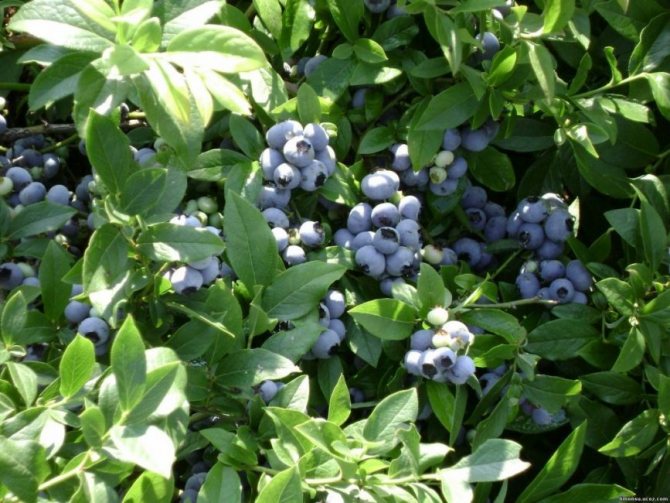

Blueberries are more comfortable in partial shade
In order for blueberries to take root faster and begin to bear fruit as soon as possible, you need to know some of the nuances of planting:
1 It is better to plant prepared plants in autumn, in September-October. During this period, the shrub takes root better in a new place, starts up roots more actively. A transplant can be carried out in the spring, but according to experienced gardeners, plants are less accepted, often get sick.
2 It is necessary to prepare the soil in advance, blueberries will not grow on any soil. Acidic soils will provide the plant with everything it needs for development and fruiting.
3 The selection of a place will also be important., sunny areas with drafts on hills are not suitable for the plant. Blueberries prefer partial shade with high humidity.
So that the blueberry bushes take root faster and better pre-oxidize the soil with sulfur. Only 50-60 grams is enough per square meter, the powder is scattered over the surface and mixed with the top layer of soil, then watered well.
back to menu ↑
See also: Blackberry: a description of the 17 best varieties, cultivation features, reproduction and care (30 Photos) + Reviews
Disembarkation
Having chosen a place and having previously prepared the soil, they begin to plant plants. For this, healthy blueberry bushes with a well-developed root system are carefully selected. It is desirable that the planting material be 2-3 years old, then already in the next season a pet from the garden will delight you with the first harvest of useful berries.
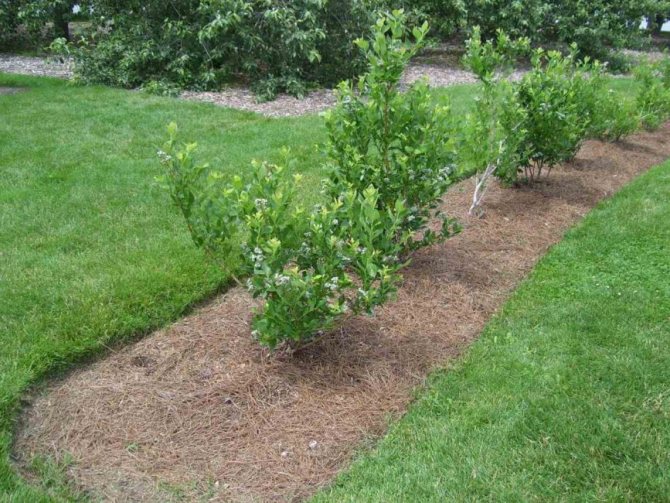

Single row landing method
It is possible to plant plants with a longer life experience, but such specimens take root worse, the first few years the berries will be small, and the plant may die from minor unfavorable conditions.
Young shoots are also planted, which are obtained by seed propagation of blueberries. They will require more careful care, but they will be able to adapt much faster.
In the second year after planting, each gardener will receive a full harvest of berries, which will depend on many of the factors described above.
Selected bushes are planted in standard ways for all plants of this type:
- Two-row principle planting is based on planting plants in two rows, with a distance of at least 0.5 meters between the rows, and 0.7-1 m between the boles.The next two rows are planted at a distance of about one and a half meters, this will allow the blueberry to grow and not get confused branches.
- Single row method the most common, the plants are planted in one row, 70 cm away from each bush. About a meter is left between the rows, this will be enough with this planting method.
Planting basics will be standard for each method:
1 First of all, you need to dig a hole, usually its size is 150 × 150 cm and a depth of no more than 60 cm.
2 A bush with an earthen lump is placed in the hole, sprinkled with earth.
3 Around the plant it is necessary to compact the earth, it is better to do this with your hands in order to fully control the process and not damage the bole.
4 The next step is to water it in moderation.
Before planting, it is imperative to moisten the root system of the seedling, experienced gardeners say that it is with a wet earthy clod that blueberries are taken faster and better.
Further care consists in possible watering, it should be carried out if necessary, if the autumn is extremely dry. It is enough to pour about 5-7 liters of water under one bush.
back to menu ↑
See also: Daisies: description, perennial and biennial varieties, growing from seeds, reproduction and care (50 Photos & Videos) + Reviews
Soil selection
As already mentioned, blueberries will not be able to grow on every soil; the bush prefers acidic soils. What to do if the type of soil on the site does not meet the requirements, and it is not hunting to refuse to grow blueberries?
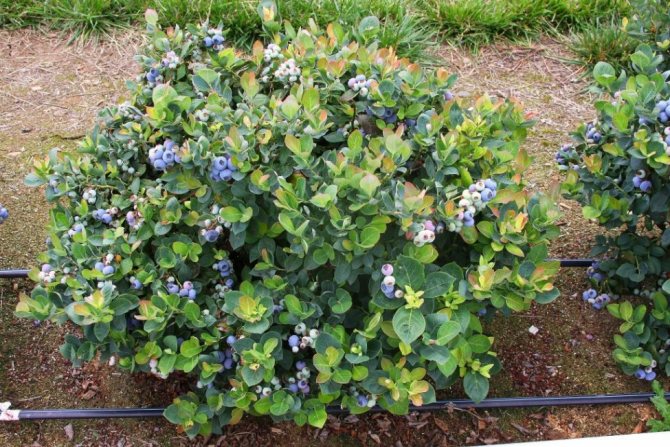

Not every soil can suit blueberries
In such cases, you can oxidize the soil yourself, this process is not complicated. Its implementation will not require special material costs.
For artificial soil oxidation for blueberry use:
- peat
- sand
- oak leaves
- sawdust
- sulfur powder
- cleaning vegetables and fruits
There are several methods using which they carry out the procedure for preparing the soil for a shrub:
- Peat crumb is mixed with garden soil in a 1: 2 ratio... Such a layer of soil should lie 50-60 cm deep in those places where blueberry planting is planned.
- A soil mixture of peat, river sand and garden soil is suitable for poor soils. The components are taken in the same proportion and thoroughly mixed. The ground should be at least 40 cm.
- Oak leaves and sawdust will also do a good job of oxidizing the selected area. They are mixed with garden soil in a ratio of 3 parts of land to one part of sawdust with foliage. Additionally, the site is digged onto the bayonet of a shovel in order to mix the soil mixture again.
In each of the above oxidation methods, it is advisable to add ¼ teaspoon of sulfur for every 10 kg of soil mixture. This will additionally fill the planting site with blueberry bushes with an acidic environment.
After preparing and laying the soil mixture, it is necessary to water the planting area. To do this, prepare a solution from any food acid and water, take a tablespoon of a kitchen product for every 10 liters. To maintain an acidic environment, you can use the same watering solution; it is used no more than once a month.
back to menu ↑
See also: Honeysuckle - a bush with many roles: description, outdoor planting and care (20+ Photos & Videos) + Reviews
Sanitary plant pruning
In autumn, before the arrival of persistent frosts or in early spring at the beginning of sap flow, blueberry bushes need pruning. Sharp pruning shears completely remove all patients, dry, faulty branches. Also, all shoots close to the ground and frail vertical shoots are subject to removal. They are cut in a special way, leaving "hemp", then there is a part of a branch about 1 cm long.
If you do not carry out annual pruning, the bush will thicken and grow. At the same time, the harvest will decrease, and there will be problems with its collection.
Growing kits
Nowadays, ready-made blueberry growing kits are gaining popularity. These are small containers containing perfectly matched soil and seeds. Such kits make it possible to grow berries even for people far from gardening. This method does not require special knowledge, and the kit is completely ready for use.
The owner remains:
- read the instructions;
- open the container;
- place it in a convenient place;
- water.
Miracle buttock
The kit allows you to get the first harvest in 20 days. Unlike varieties adapted for growing in gardens, it does not require additional feeding. The plant is capable of bearing fruit all year round.
To get the harvest you need:
- order a set;
- unpack the box;
- install on a balcony or windowsill;
- water according to the instructions.
Blueberries all year round
This kit allows you to harvest blueberries in 3 weeks after unpacking the container. The plant will yield a crop for three years, provided that the light regime is observed and the necessary humidity is maintained.
The set contains:
- instructions with a detailed description of the features of care;
- soil enriched with perfectly matched fertilizers and growth stimulants;
- seeds.
Home buttock
Another type of home growing kits. The principle of use does not differ from the previous options. According to the manufacturer's assurances, the kit has a number of undeniable advantages:
- allows you to get 3-5 kg of blueberries from one set;
- the plant is resistant to any diseases;
- does not require additional fertilization;
- the crop does not contain chemicals and other harmful components;
- if necessary, the plant can be planted in street beds.
Blueberries can be grown at home. But for this you need to follow the rules of planting and subsequent care of the berry.
Everyone knows that blueberries are good for your health. Its berries contain a large amount of vitamins and minerals. The plant prefers to grow in coniferous forests. But many gardeners want to plant this plant in their area. In order for it to grow and develop, it is necessary to create the usual conditions for it.It is very simple to grow blueberries on a personal plot, the main thing is to know all the intricacies of planting and caring for a plant.
Despite the fact that blueberry requires that a person is constantly in an inclined position when picking berries, everyone wants to eat berries. Blueberries are a plant that is not afraid of frost or heat. It grows in most cases in the middle lane, but sometimes it happens to meet this plant and beyond the Arctic Circle. Since she likes to coexist with conifers, it follows from this that she loves rather humid places with high acidity of the soil.
Thus, before growing blueberries from seeds at home, in order for the plant to feel good, develop and bear fruit, it needs to create an environment similar to natural. Despite the fact that a garden type of shrub will be grown, the conditions for its growth should not differ in any way from the conditions for the growth of a wild plant. When planting blueberries, don't make the mistake of planting them in the shade of trees. This bush loves lighting, so the area where it will grow should have partial shade and a small body of water nearby. These conditions can be created artificially, for which the shrub will thank you with a generous harvest.
Blueberry in a pot
Blueberries grow without demand
And my blueberries came to life. As soon as the sprouts rose, I transplanted them to the garden bed along with the contents of the cups. And again I poured the solution. Then she did it interspersed with ordinary water.
By the way, in order not to steam too much with watering blueberries (there are enough other concerns besides her), I mulched the ground around the stems with moss.
And it worked: two weeks later I saw an increase on the main stems - two double shoots of light green color. Then I poured more peat under each bush (without any additives), directly from a handful, and sprinkled it with water from my hand. Two weeks of planting - no gu-gu.
And then suddenly every twig on them was covered with nondescript-looking gray-green inflorescences. And again I was surprised, because I had never seen blueberries bloom, although I spent all my childhood in the village with my grandmother.
And then gray-green berries appeared on the bushes, but, unfortunately, none of them matured: they fell off, drying out at the stalk. And the bushes remained green, even stronger. Well, I got offended at them, stopped and approach them - grow as you want. In the fall, I noticed that all the blueberry shoots, without flowers and berries, rose even higher. Yeah, that means they are thinking something about themselves. Okay.
For the winter, out of pity, she filled them with moss left after caulking.
And the next year, in mid-May, my blueberries went to climb in different directions. Even where I did not expect, continuous shoots hatch.
I did not interfere with them - let them try. Only all the same, she limited their freedom by digging sheets of slate around this "self-proclaimed" plantation.
But further - more.
Blueberries crawled under them and brazenly began to grow in the corner of the site, where we never planned to plant anything at all, because there is a low ground and it is always damp. Well, since someone liked this worthless land, then so be it - I poured fertile soil under the blueberries, even tamped it a little. And what do you think? Plants flooded all this inconvenient lowland.
Popular blueberry varieties
- Chandler is a one and a half meter bush with large berries.
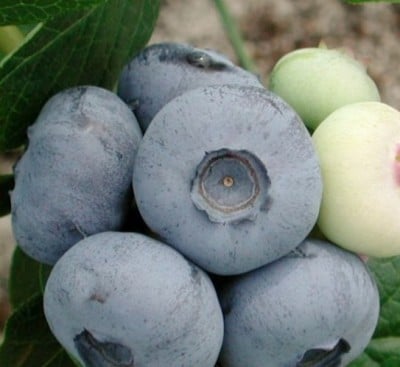

Chandler variety
- Top Hut is a short plant with small but delicious berries.


Top Hut variety
- Spartan - reaches a height of 2 meters. It bears fruit with large blue berries.
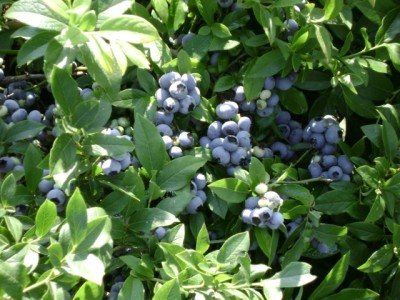

Spartan variety
- Sunshine - Suitable for breeding in containers. The maximum height is 90 cm. A characteristic feature is abundant fruiting.


Sunshine variety
- Bluecrop is a bush about 1 meter high. Suitable for breeding in containers. The berries are large and sweet.
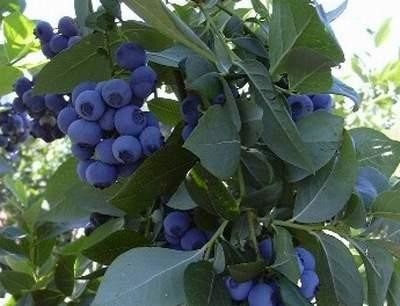

Bluecrop variety
Collect blueberries only after their color acquires a bluish-black tint.It is then that the fruits can be considered ripe. The fruiting period of blueberries is from mid-summer to autumn. By planting several different varieties, you can enjoy this berry for at least three months a year.
Application
Collecting blueberries is troublesome, small berries are tightly attached to the stems with the stalks. But the beneficial substances contained in berries will become a lifesaver for many diseases. Blueberry fruits are indispensable for colds, purulent tonsillitis, vision problems.
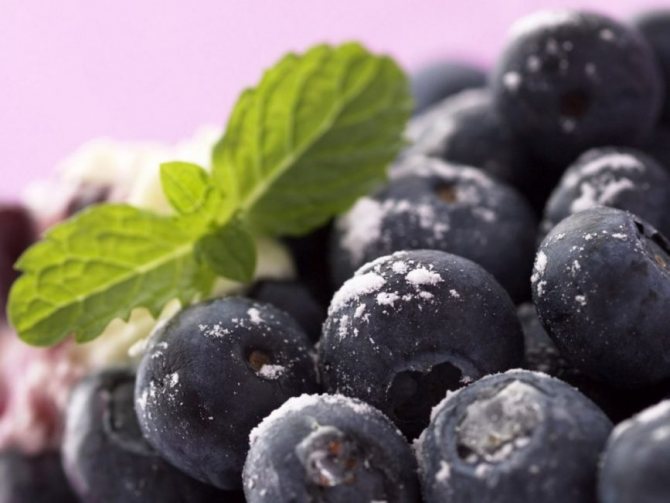

Frozen blueberries
Traditional medicine uses not only fruits, branches and rhizomes of shrubs are considered healing.
The collected berries are carefully sorted out of debris, the stalks and leaves are removed. Further processing can be of several types:
1 The blueberries are canned. The berries make delicious compotes, the main thing is not to put a lot of berries in jars, otherwise the seaming will be sugary. For a 3-liter jar, 1/5 of the berry capacity is enough for the preparation to be tasty and have a rich color and taste. Jams and marmalades from blueberries are excellent; for their preparation it is better to use fully ripe berries, which are usually rubbed through a sieve to obtain a uniform consistency, and then boiled with sugar to the required state.
2 Blueberries are perfectly frozen. The collected berries are sorted out, washed, slightly dried. In small portions, they are sent to the freezer for several hours. After that, they are collected in containers for further storage. Sometimes freezing is carried out already crushed and mixed with sugar berries in special containers, such a product will be inferior in the content of useful microelements and vitamins to frozen blueberries.
3 In a non-standard way, blueberries are stored in glass containers of any size. To do this, the containers are thoroughly washed, dried and calcined in the oven for several hours. After that, prepared berries are poured into the container, the container is corked and poured with wax. Store glass containers with berries in a cool dark place, the shelf life can be up to six months.
The rhizomes and stems are harvested for medicinal purposes in the same period as the berries. They are dried hanging in the shade or partial shade. This cannot be done in the sun, all the beneficial properties of the plant will simply evaporate.
The pharmaceutical industry uses both fresh berries and dried ones. Blueberries are a part of many medicines to improve vision, anti-inflammatory and immunomodulatory medicines for children and adults.
Some manufacturers of fat-burning dietary supplements and other preparations for cleansing the body and losing weight use the ground part of blueberries. Branches and leaves help cleanse the digestive tract from toxins and other harmful deposits, normalize the liver, and relieve inflammatory processes in the internal organs of the human body.
back to menu ↑
See also: Hyacinths in the garden: description, types and varieties, planting and care in the open field and at home, when to dig out and what to do after flowering (70 Photos & Videos) + Reviews
The best timing and methods for planting blueberry bushes
Usually, blueberries are planted in the fall or spring. The most favorable is the end of October and the beginning of November.
It is necessary to plant 2-3-year-old plants with a native lump of earth. It is necessary to moisten the soil on the roots with plenty of water. If you ignore this requirement, the bushes, most likely, will not take root and will quickly die.
The root ball must be loosened up before the bush is placed in the ground. In addition, the roots should be straightened, after which they are covered with earth and then everything is compacted. We water the planted bush with water, which will take a lot, but only so as not to completely fill the root system.
If possible, the area with seedlings should be mulched, that is, materials should be placed around the bushes that are suitable to delay evaporation of moisture.This can be sawdust, fresh peat, or large fallen leaves such as oak or maple.
When planting older bushes that are more than 4 years old, branches should be pruned, but this should be done no more than 20 centimeters.
All these procedures will enable blueberries to feel good and bear fruit in a new place.
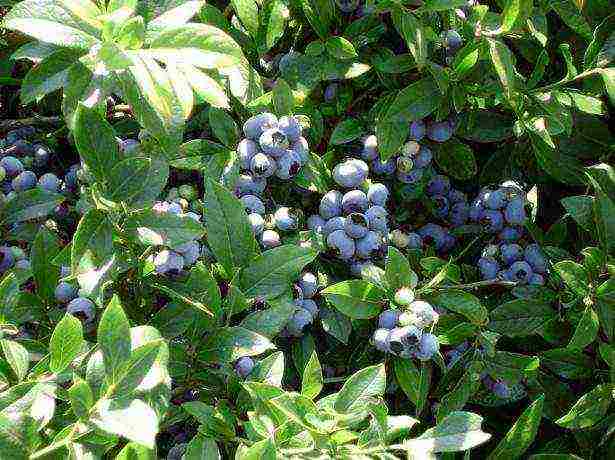

When planting older bushes that are more than 4 years old, you should prune the branches
Correct pruning and pest control
Bushes grow upward and outward, they need to be cut off. The procedure is carried out in early spring, when the buds have not yet blossomed.
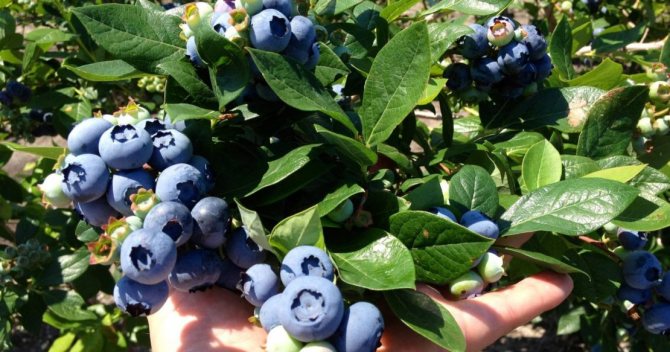

If the shrub is more than 3 years old, pruning is carried out regularly. Branches with cracks, diseases and dryness should be cut off. Side shoots are also removed, they produce fewer berries and take longer to ripen.
Pests live where there is rotting flora. It is necessary to monitor the water level in the soil, fallen leaves and mulch in order to prevent the appearance of harmful insects in time.
Expert opinion
Elena Pchelkina
Horticultural Expert
To prevent the leaves from eating aphids, the plant is treated with insecticides. The drugs Fundazol and Topsin will help against miscophereliosis, they are mixed at the rate of 2 grams per liter of water.
Bordeaux liquid helps against mold fungi. The plant is irrigated with it several times per season. The first time - before flowering, the second - after flowering, the third - after harvesting.
Blueberry properties
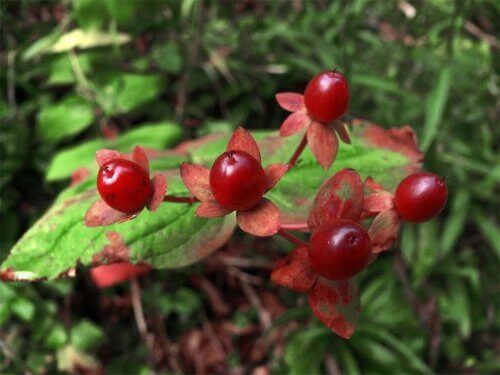

First, blueberries are rich in vitamins and minerals. First of all, it is worth noting the high content of vitamin C, vegetable fiber, potassium, iron and calcium. Secondly, these berries contain natural pigments that are powerful antioxidants.
Now we will tell you what exactly blueberries are so beneficial for our health:
- Antioxidants, anthocyanins, and carotenoids are important for healthy teeth and bones, as well as red blood cell formation. They also improve the absorption of iron and neutralize substances harmful to the body.
- Potassium has a beneficial effect on the functioning of the muscular and nervous system.
- Fiber contributes to the regulation of intestinal flora.
- Vitamins strengthen the immune system, and therefore prevent various diseases.
- That is why blueberries are especially recommended for pregnant women.
- The antiseptic effect of blueberries helps in the treatment of diseases caused by parasites.
You can also read: Foods that contain fiber and help you lose weight
A good fit is important!
You can plant blueberries in a permanent place in the spring until mid-May or from late August to October. In order for the bush to develop and please in the season with a high number of sweet large berries, the following must be observed:
- Prepare the hole.
Let it be about 80 cm in diameter and 60 cm deep. The bottom of the hole is ten centimeters lined with fallen needles gathered in the wilderness. The excavated soil is mixed with peat at a ratio of approximately 1: 1. If, for example, the soil on the site is not acidic enough, 100 g of powdered sulfur is added to the peat mixture. - Distance between plants
should be at least 1 m, perfectly 1.5 m. - Roots
seedlings
need to straighten
before placing in the hole. In this case, it is worth trying not to shake off the clod of earth from the previous place of growth. Moreover, it is not necessary to deepen the root excessively or, on the contrary, to huddle it, filling it with a prepared peat-earth mixture. - The planted plant needs timely watering. To eliminate drying out of the soil wood chips crumble under the bush
from pine needles, oak bark or sawdust.
Care rules
In order for a blueberry bush to continue to bear fruit for decades, it needs to be looked after based on the specifics of the plant. Basic care measures:
Blueberries growing in the garden need abundant watering. The culture is moisture-loving, so it is important to moisten the soil in a timely manner.With insufficient watering, the bushes will wither, the berries will become dry and tasteless.
On a note. Gardeners need to take into account the fact that garden blueberries do not tolerate strong water stagnation. If the roots are constantly in water, it will lead to root rot.
If the weather is dry, then the bushes are watered once every 5 days. In a rainy summer, watering is done as needed. Plain water can be alternated with acidified water.
To keep the ground slightly moist, and no crust forms on the ground, the hole is mulched with sawdust or peat, a layer of mulch should be made at least 3 cm.
If the plant grows in an open, well-lit area, then the bushes should be sprayed with standing water in the morning or evening hours, when the sun is not active.
Garden blueberries: propagation from seeds of ripe berries
To obtain
the seeds
, the berries should be kneaded in a glass and a large amount of water should be added. After the seeds float, remove the peel with pulp and drain the water. This must be done several times to keep the water clear. Dry the resulting seeds: remove from a glass and put on napkins. Fill boxes, pots or other containers with peat. Seed material can be planted with a paper layer.
The first shoots will appear in a few weeks. Before the onset of cold weather, the seedlings are transferred to a warm room, where the temperature should reach 5-10 degrees. In the spring, a pick is made and the plant is grown. The seedlings are planted in the designated place the next year. You can grow blueberries in another way: in the allotted area, dig in the berries without separating
the seeds
... After that, they are waiting for spring shoots. This method of reproduction is unproductive, due to the heterogeneous formation of seedlings.


The germination process can take up to 3 years. It is not difficult to grow blueberries from frozen berry seeds. You can purchase them from the store or do it yourself. Since the berries are stored in the freezer, they do not need to be stratified.
Separate seeds from frozen berries, leave to soak in Zircon solution for a day. A similar growth stimulant can be used. After that, sow in the school.
It is important that the soil environment is as close to natural as possible. For the substrate, you can use peat in combination with sand, bark, sawdust, fallen leaves. For acidification, 100 g of sulfur can be added to the peat mixture. Also, when planting, the soil is watered with not very acidified water. Add a teaspoon of citric or oxalic acid to 3 liters of water. You can use malic acid, acetic acid: for 10 liters of water, 100 ml of food acid. With a competent approach and adherence to all growing conditions, the emergence of shoots from stratified seeds can be seen in a month. After
sowing
seeds, the first berries appear in the third season.
Pros of the blueberry business
What is the beauty for a budding entrepreneur who decides to start a blueberry business?
- First, there is an extremely low supply of marketable berries and processed products on the market, which is due to seasonal dependence and the factor of annual yield for products harvested in places of natural growth. Low supply brings with it a shortage of berries, especially in lean years, extremely insignificant competition and fairly predictable pricing, which is an important factor in modern conditions.
- Secondly, in addition to making a profit from the output of the berry, blueberries also make it possible to receive money from by-products. For example, she is a wonderful honey plant and if you have your own apiary, a blueberry plantation will provide your farm with amazing heather honey, so poetically sung by the highlanders of foggy Scotland. If you do not have an apiary, and the blueberry is quite extensive, then you can attract third-party beekeepers, which also will not leave you without fragrant honey, based on the principles of mutually beneficial cooperation.In addition, certain money can be obtained even from waste, because when thinning plantings of blueberries, leaves and stems can be harvested, dried and handed over to procurers of medicinal raw materials.
- Thirdly, blueberries are still insufficiently cultivated in domestic realities and, as a result, are not very susceptible to diseases and pests, as invariable companions of intensive farming.
- And lastly, this berry is guaranteed a stable sale, especially in the south of the country, where it does not grow under natural conditions, the purchasing power of the population is quite high, the berry supply is represented mainly by traditional crops, and the network of wholesale and retail trade and restaurant business facilities is well developed.
A categorical plus when organizing a business on the cultivation of blueberries should be considered that its berries, in the case of residues from the sale in fresh form, are perfectly processed and stored, which makes it possible to more evenly receive the distribution of profits and the receipt of funds and winter time, in the so-called off-season period.



